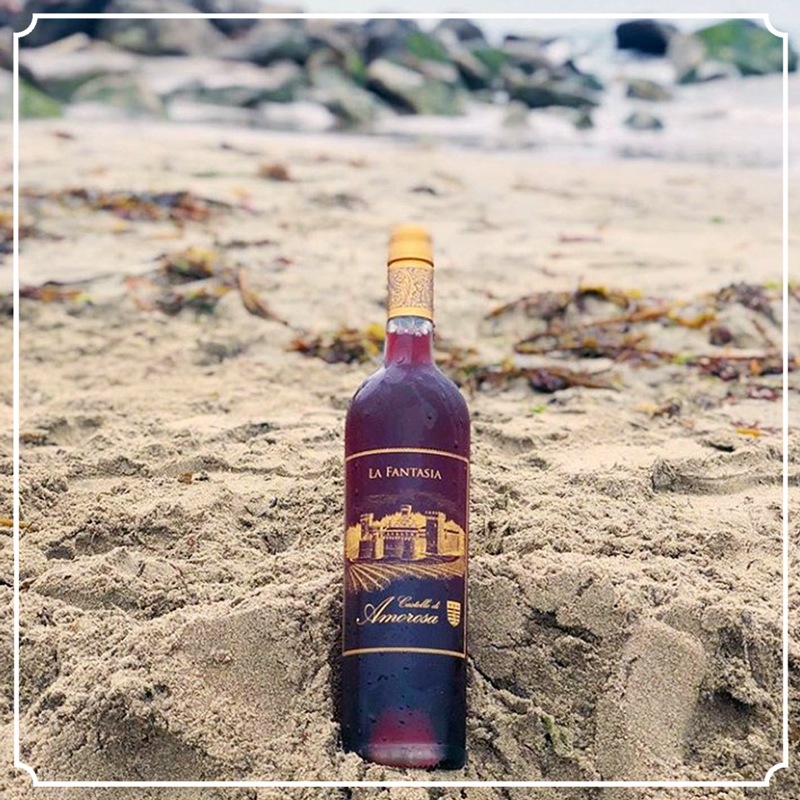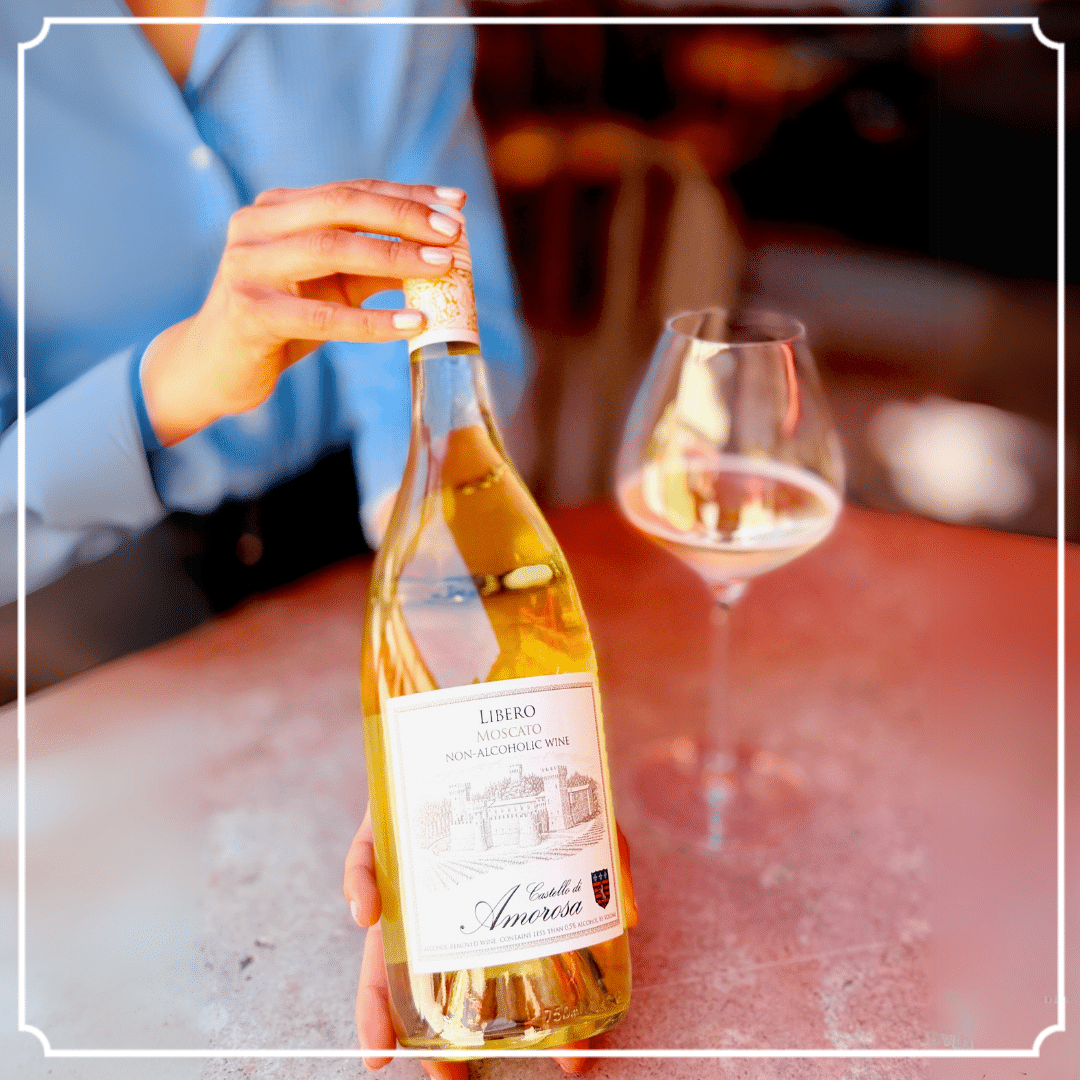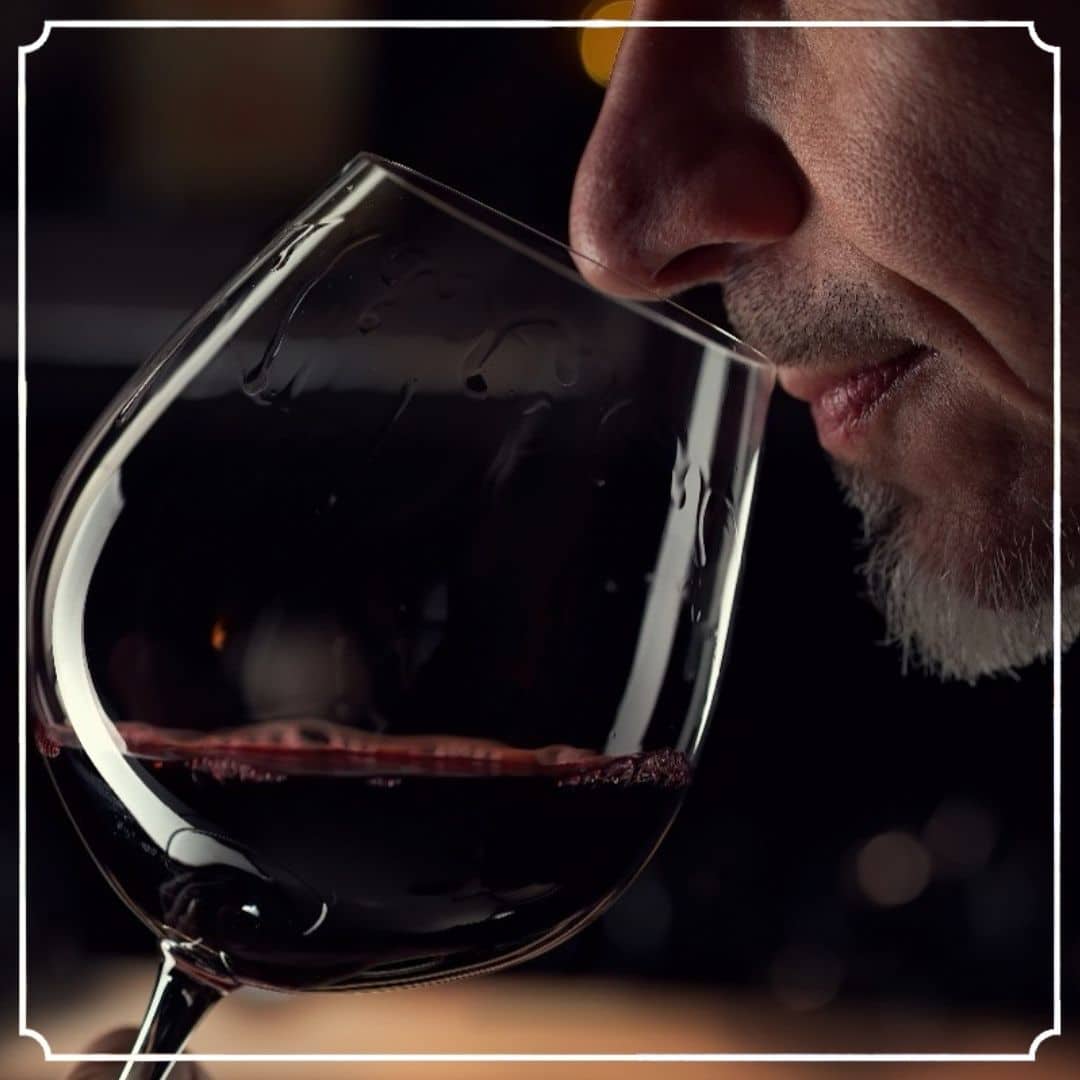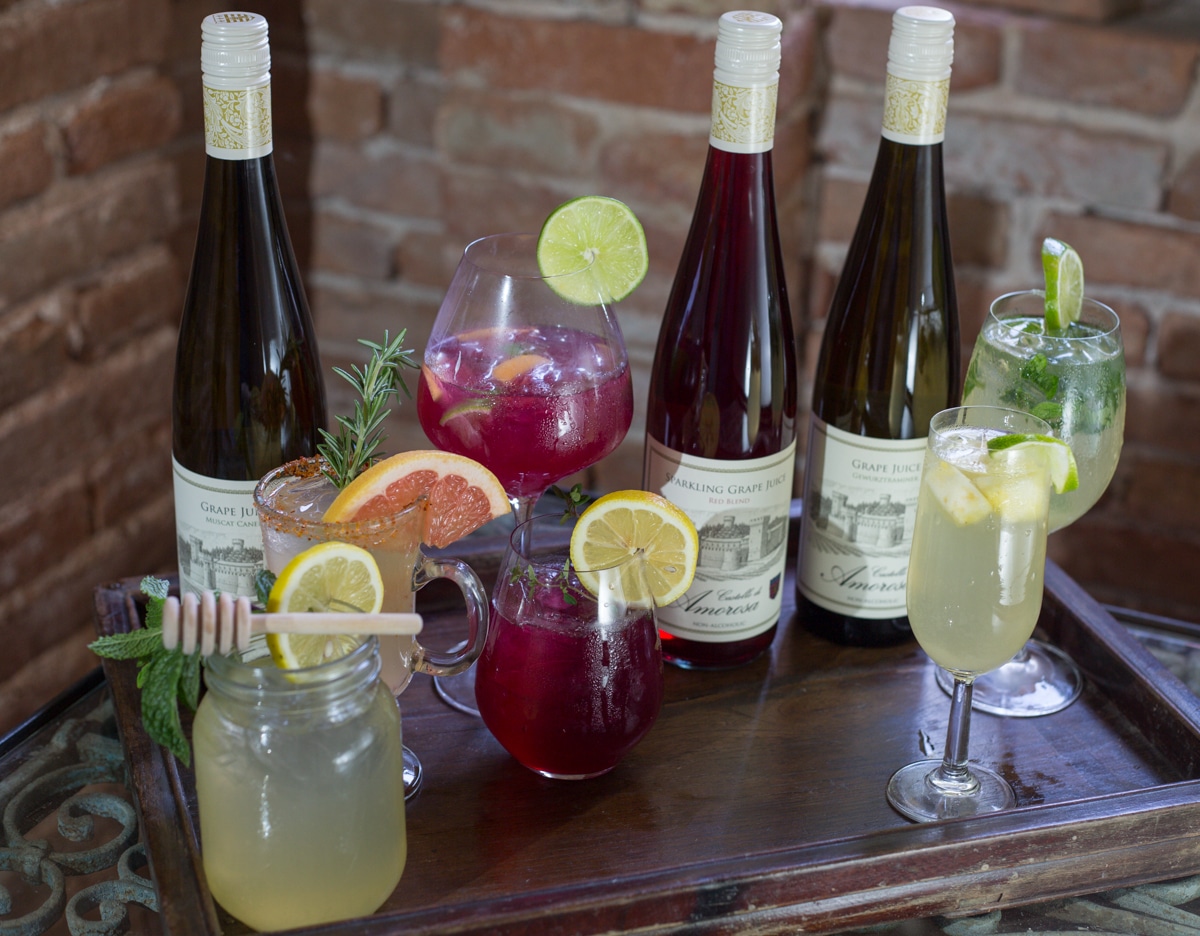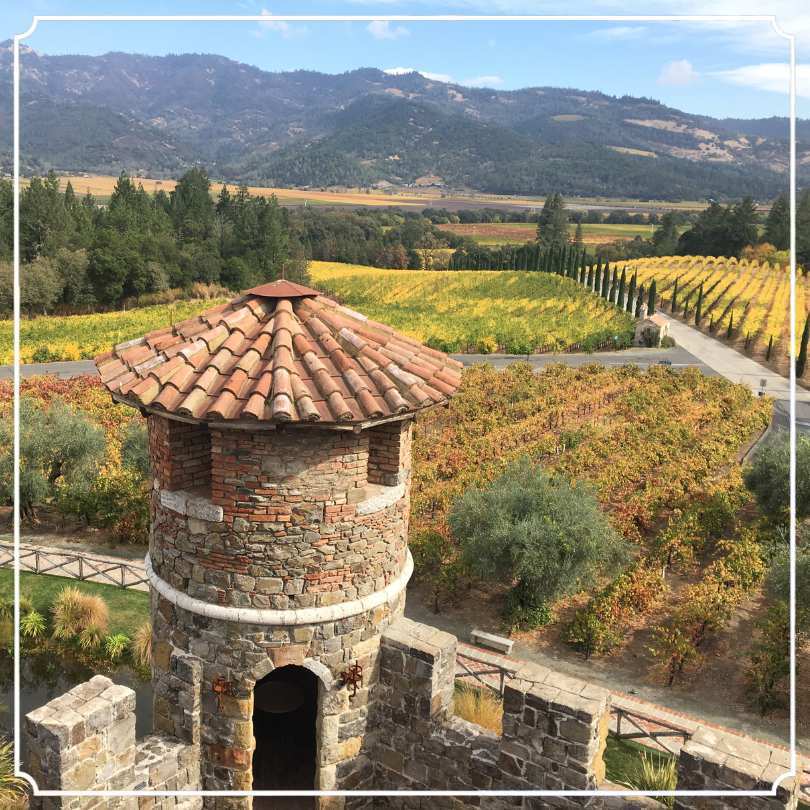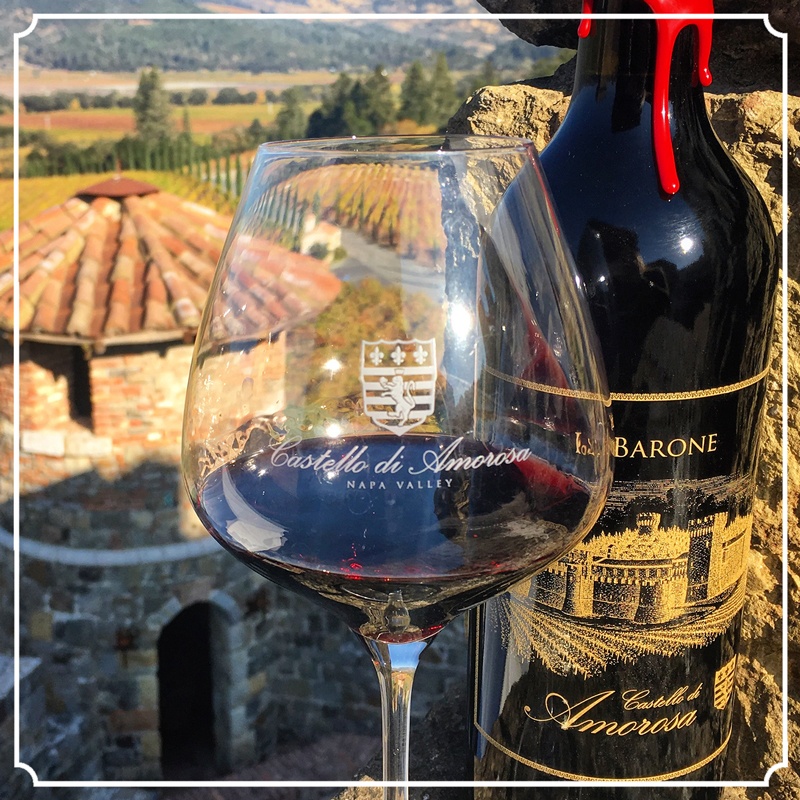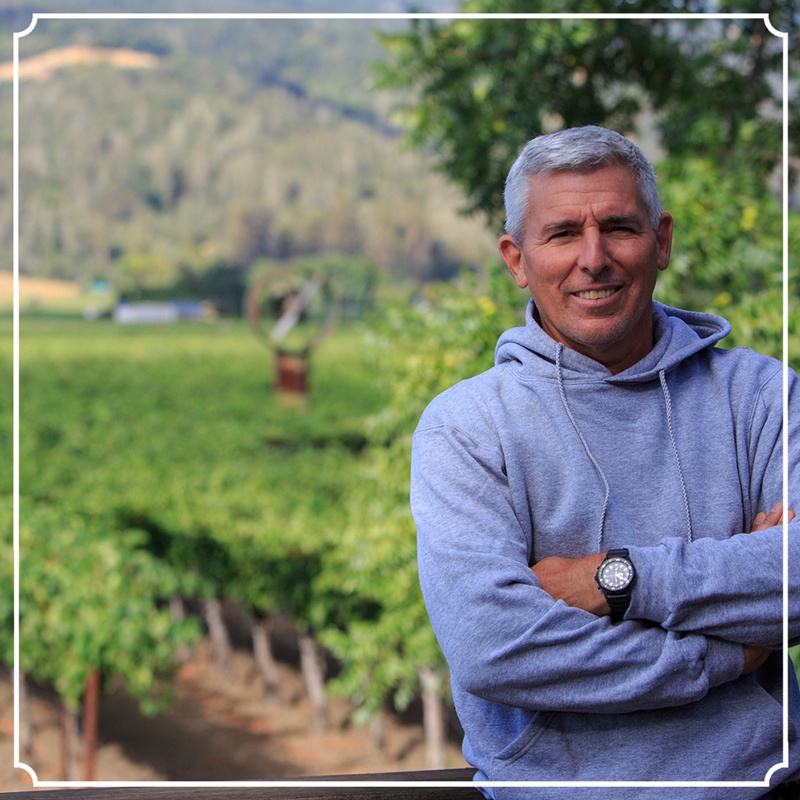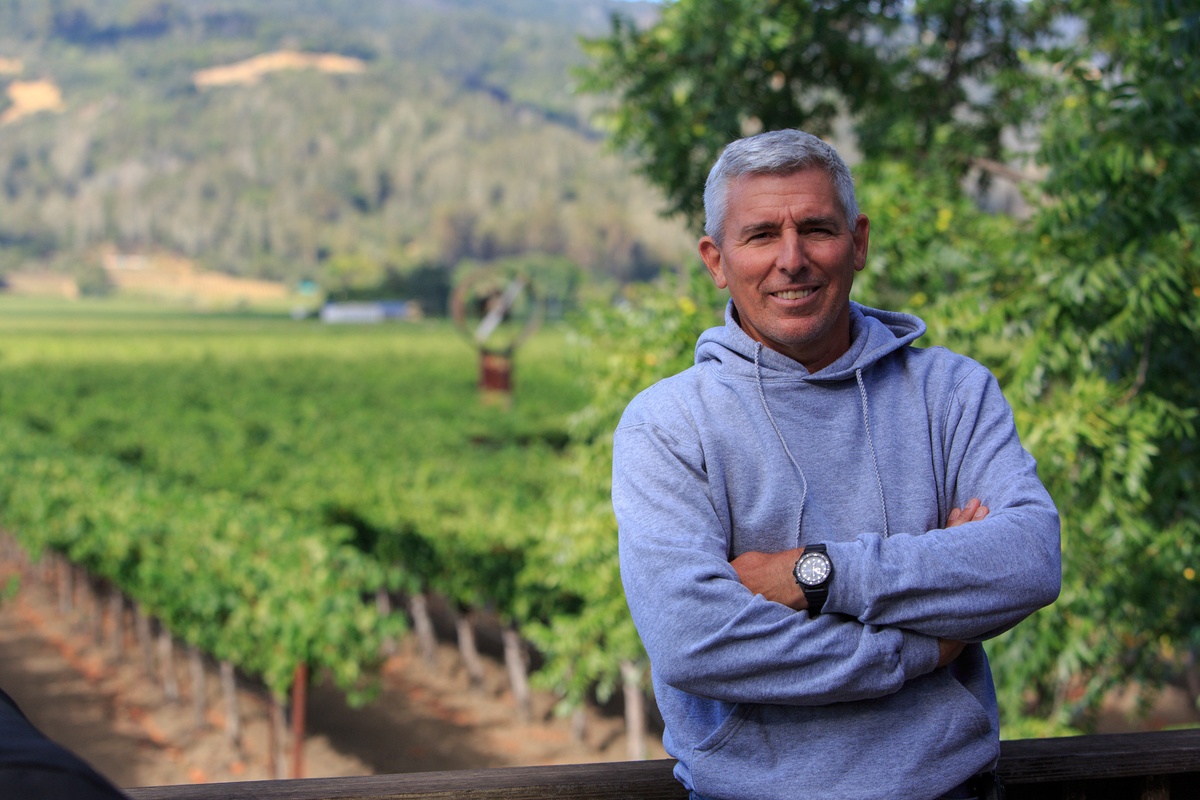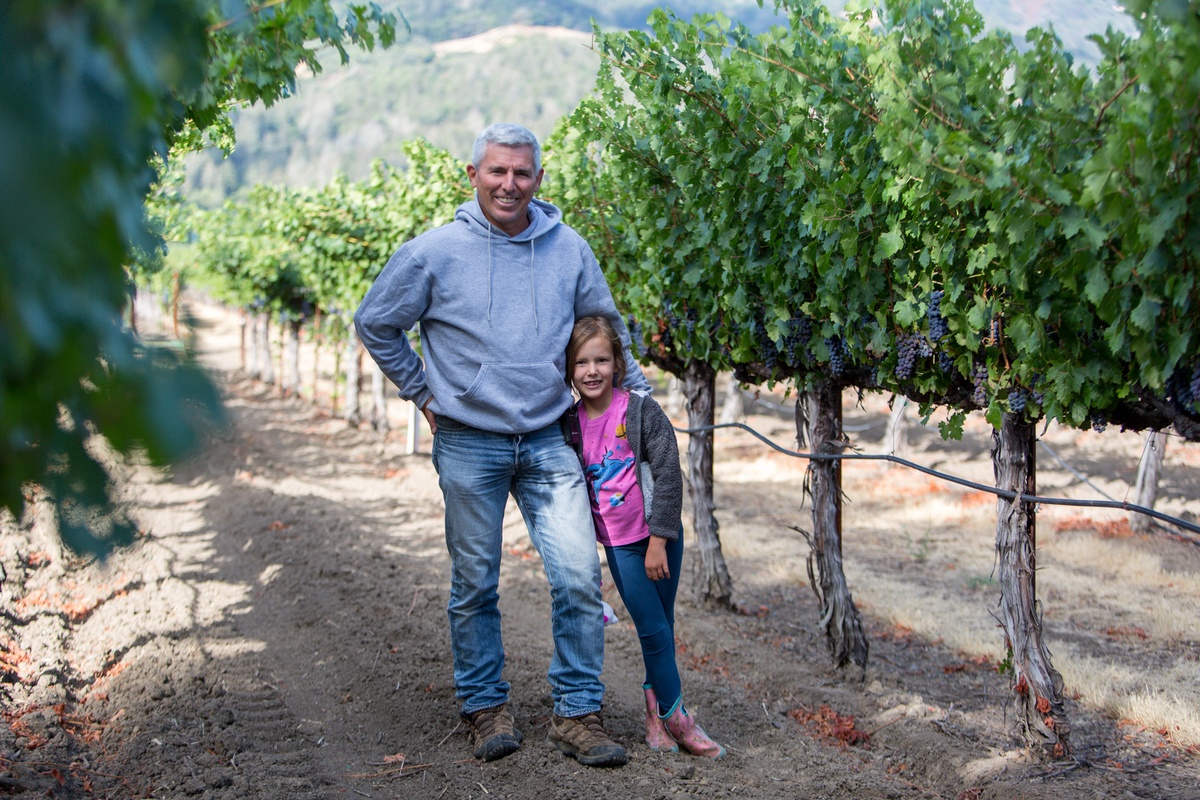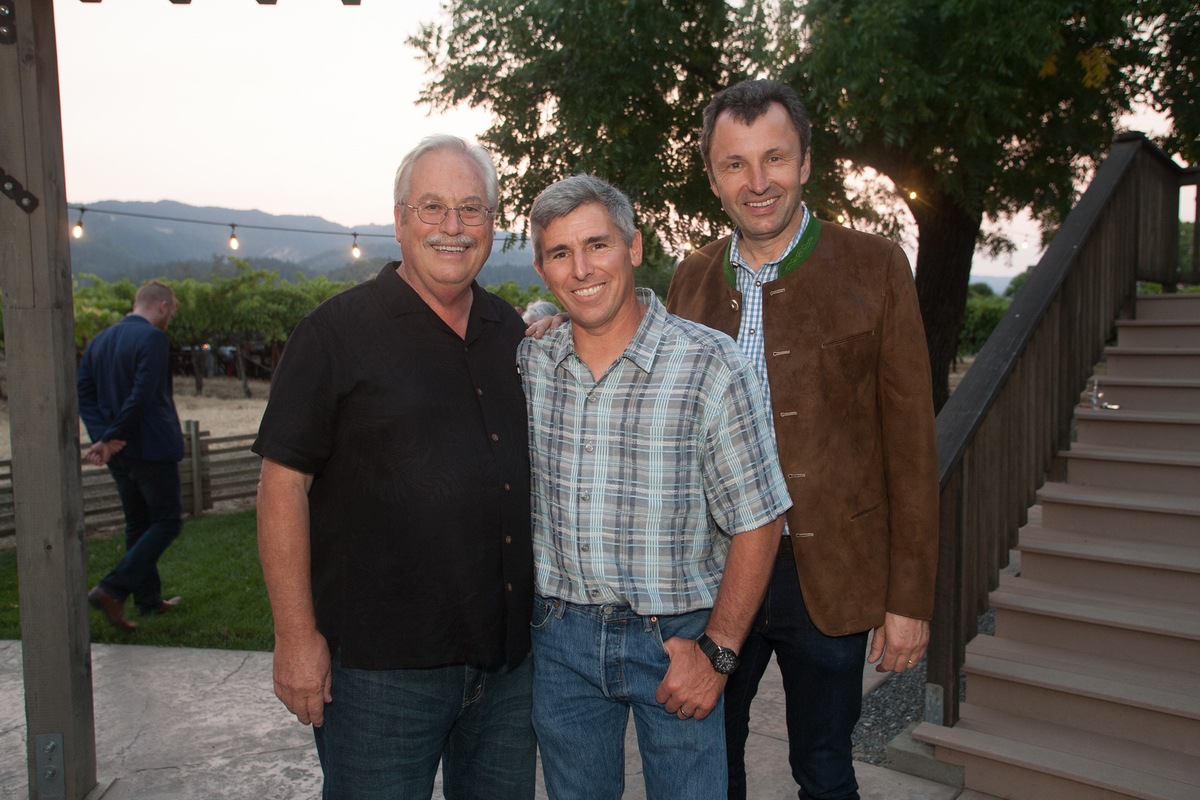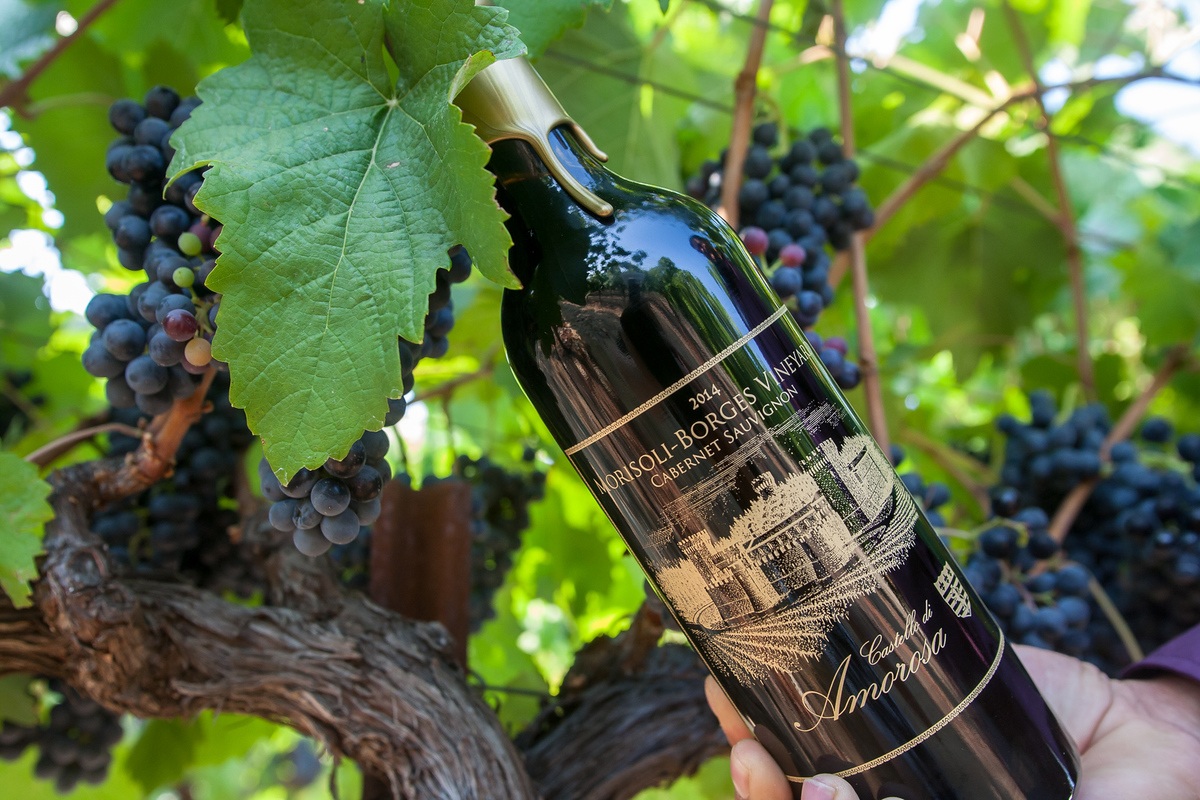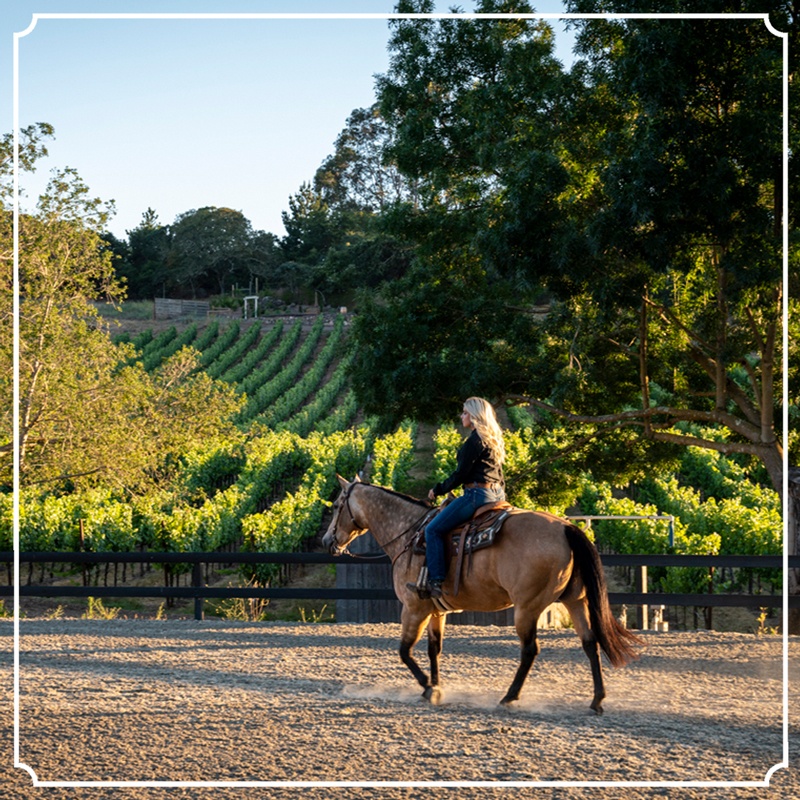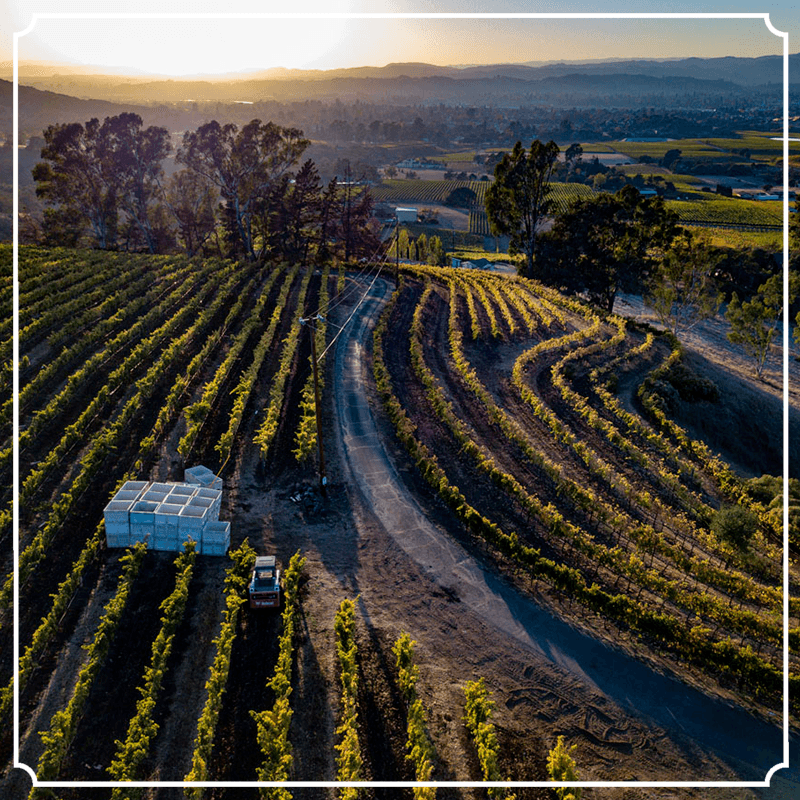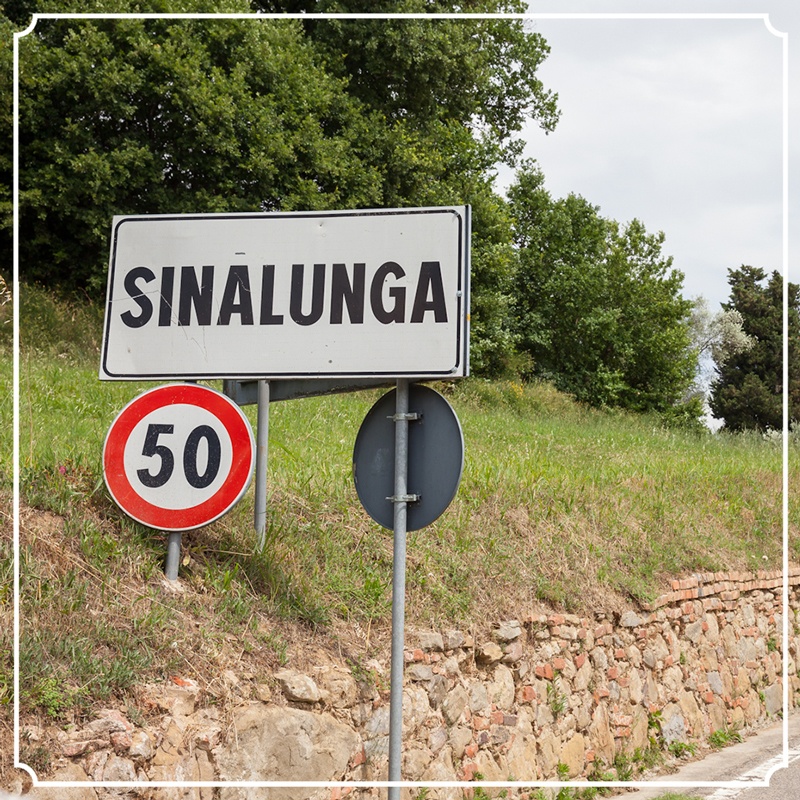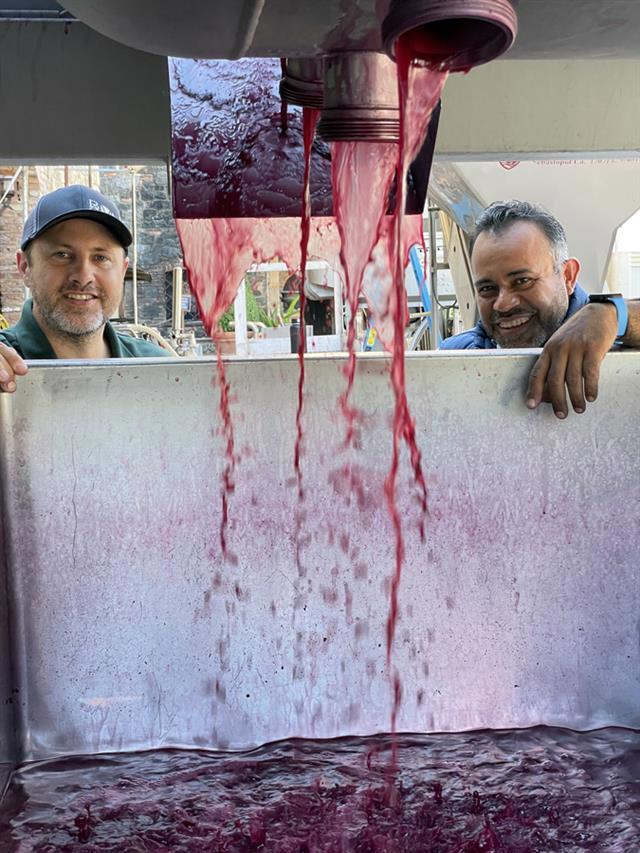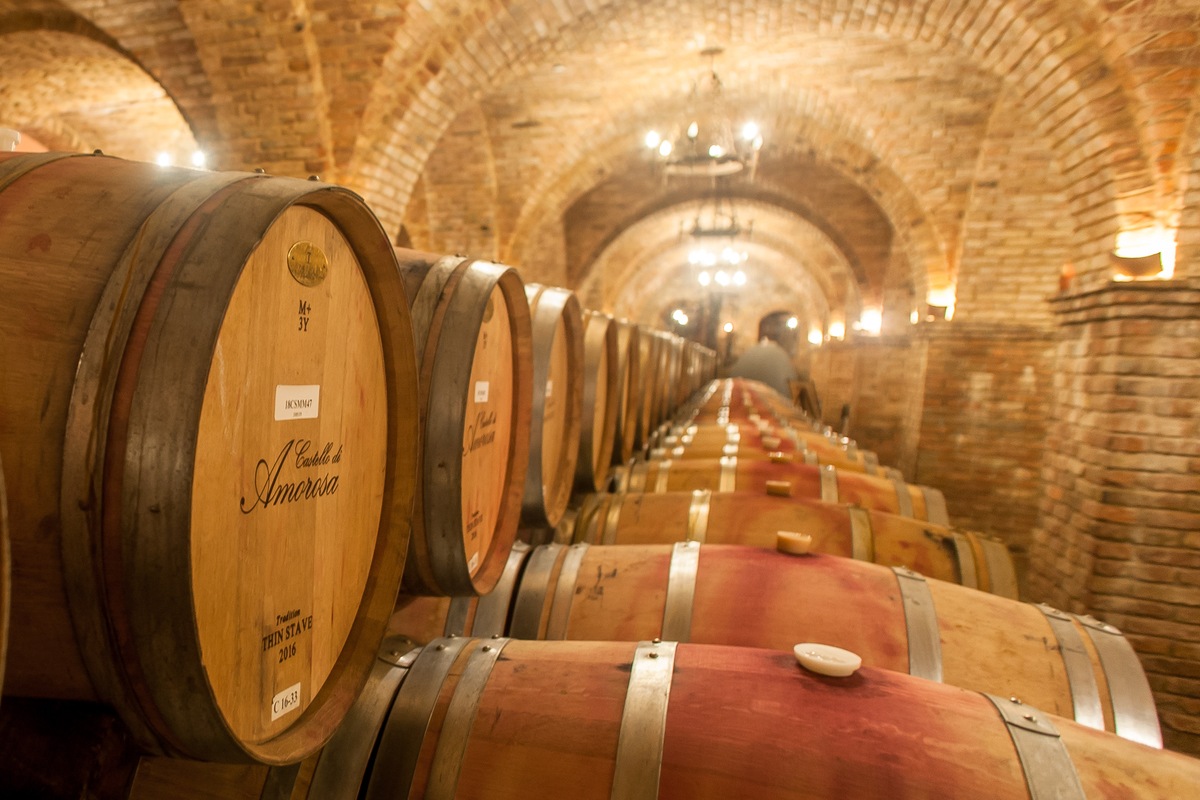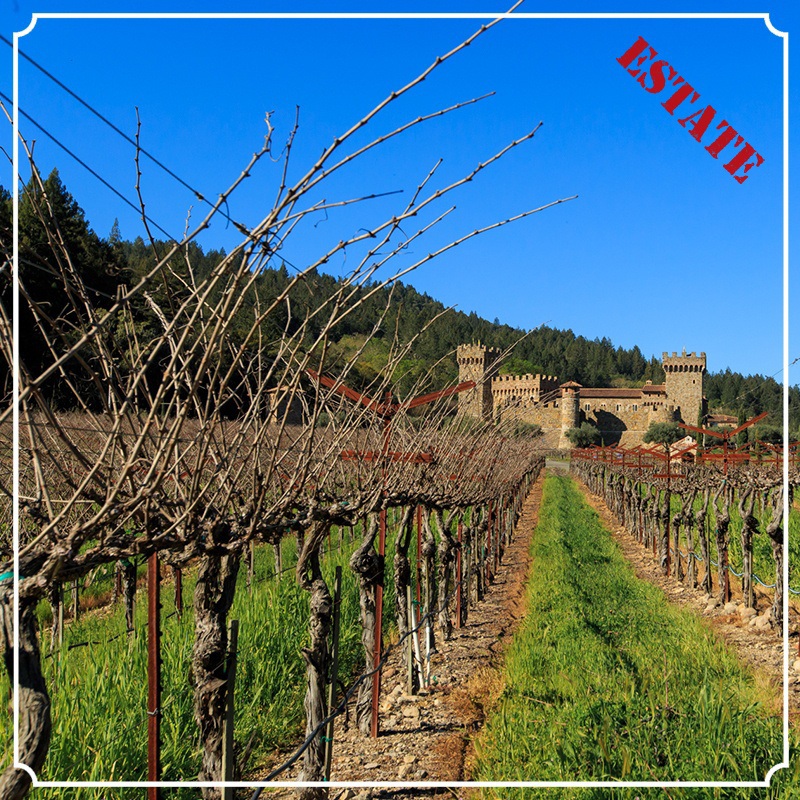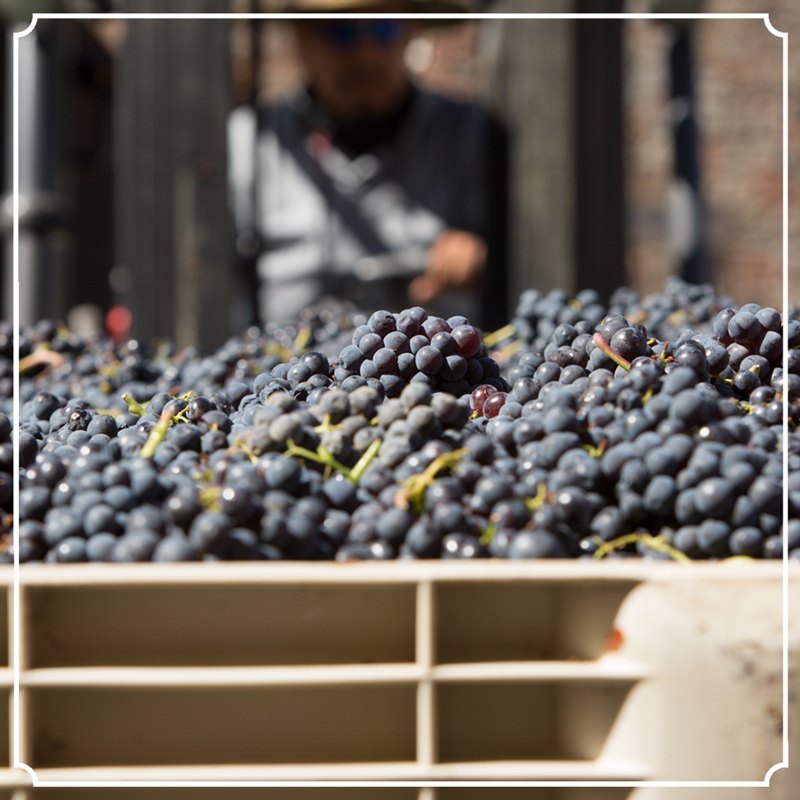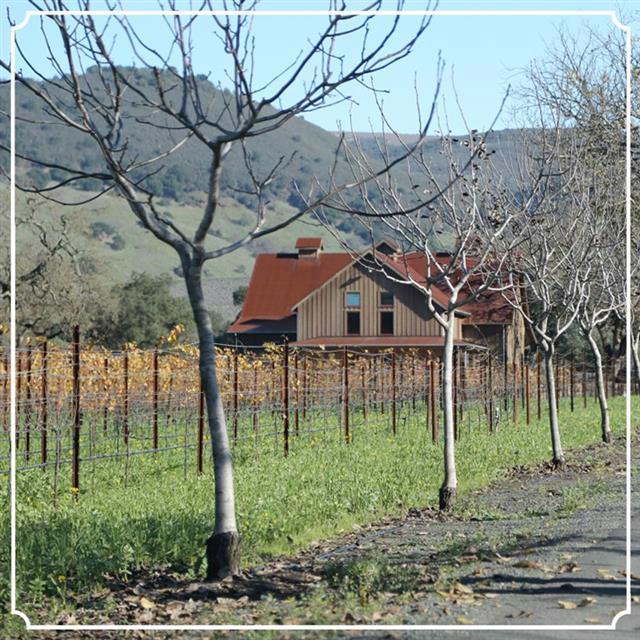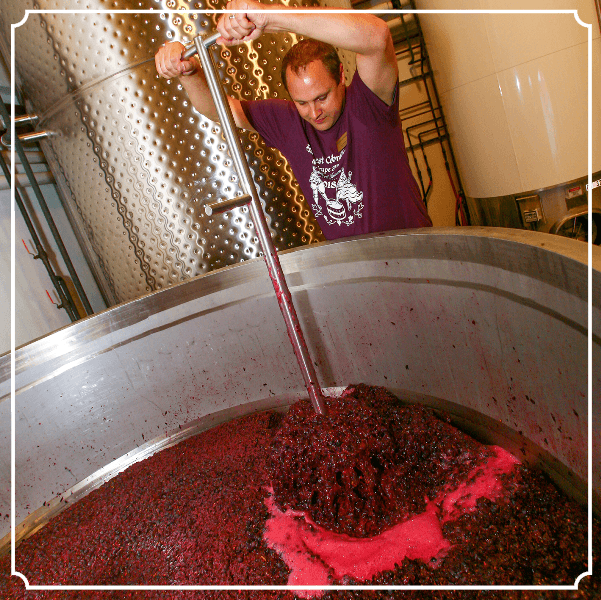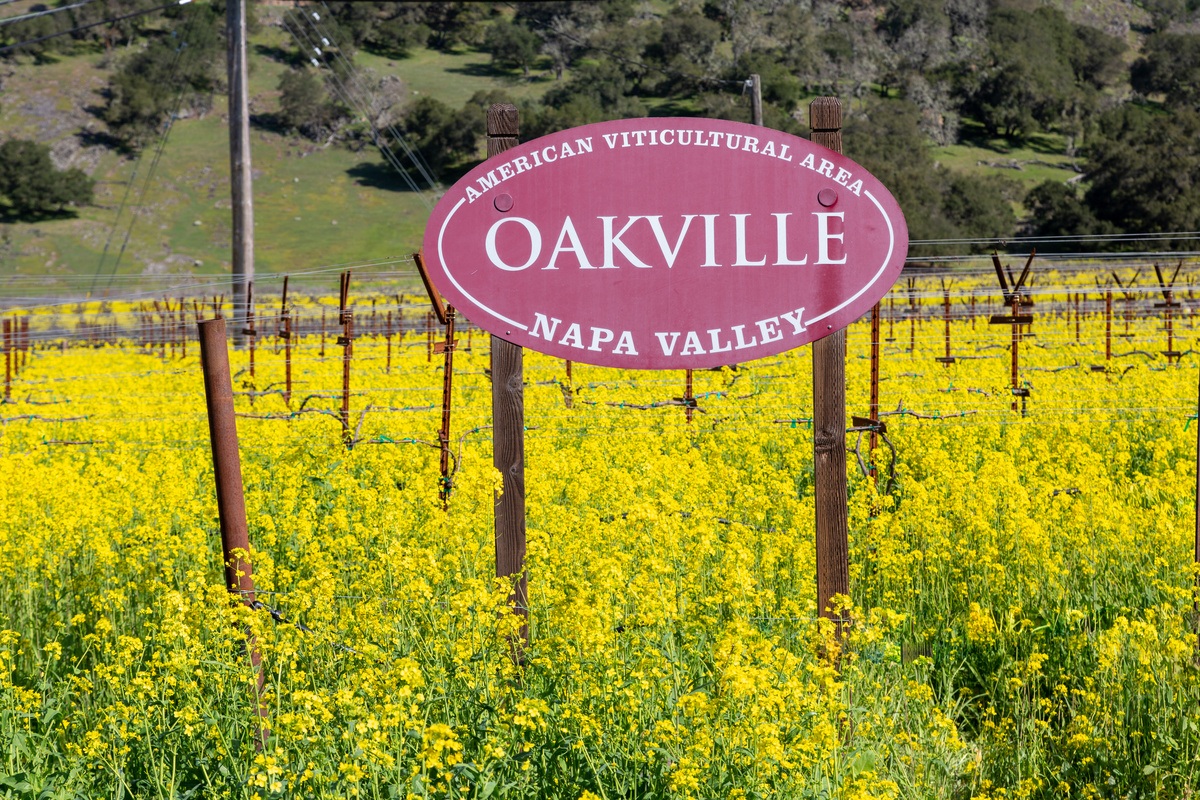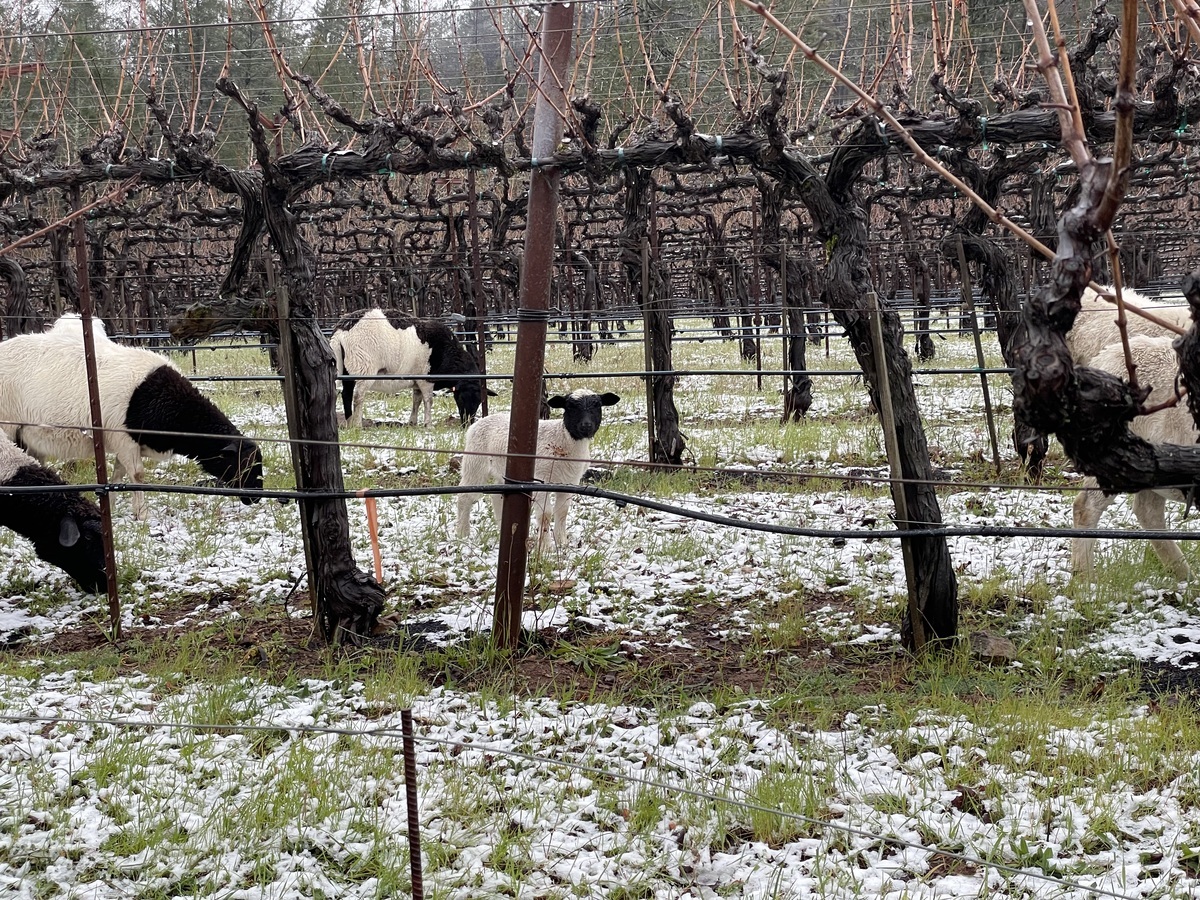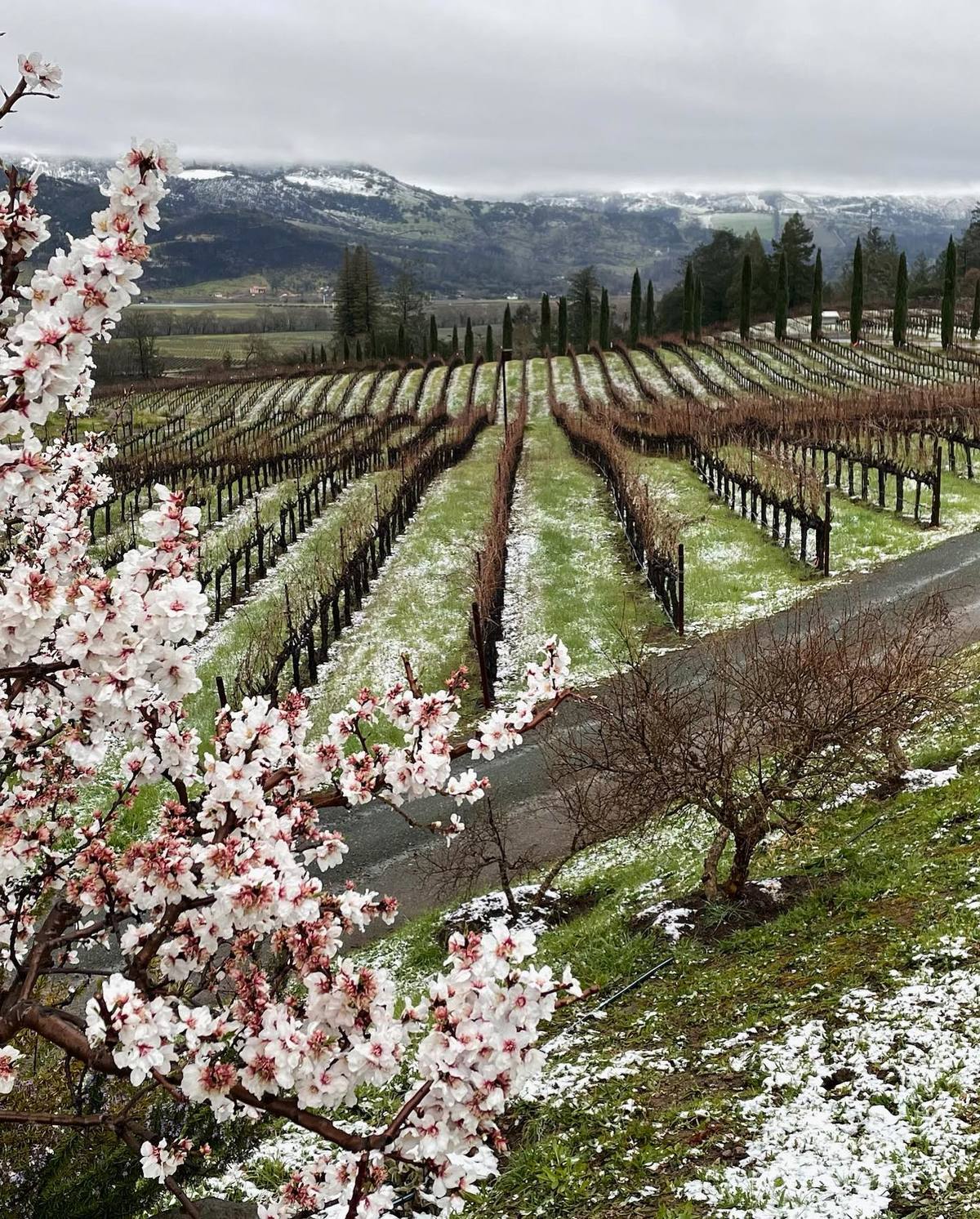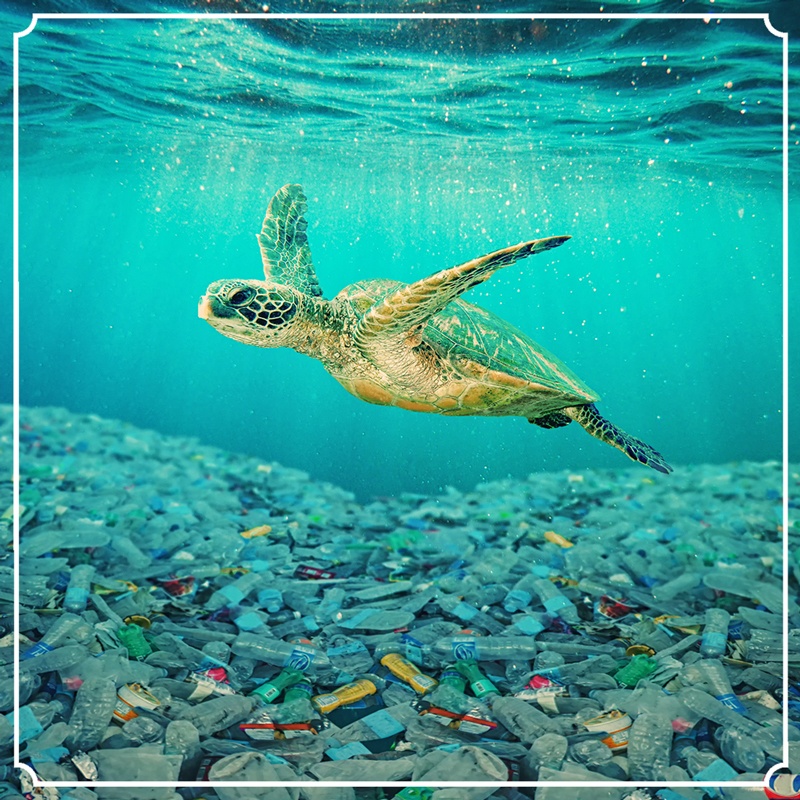Introducing Libero: Castello di Amorosa’s New Non-Alcoholic Wine Experience

Introducing Libero: Castello di Amorosa’s New Non-Alcoholic Wine Experience
Freedom to toast, freedom to choose, freedom to savor — without limits.
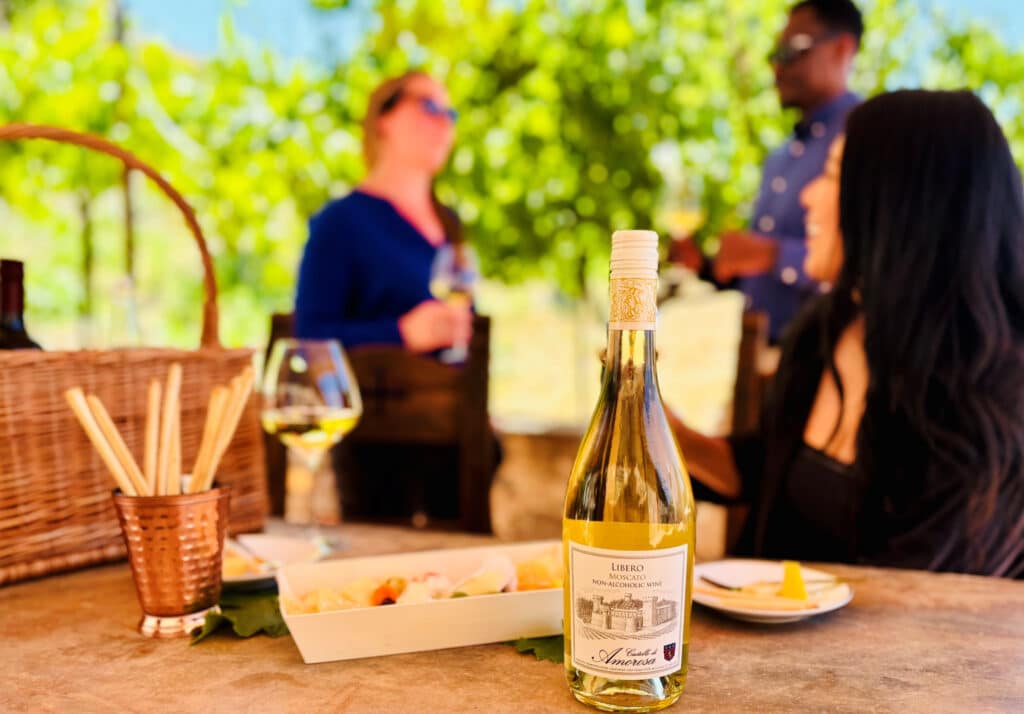
A New Chapter in Winemaking
At Castello di Amorosa, we’ve always believed that wine is about connection — with place, with people, and with celebration. That’s why we’re proud to introduce Libero, our new line of non-alcoholic wines.
“Libero means free in Italian,” says Winemaker Peter Velleno. “Free to savor, free to celebrate, and free to choose what feels right — whether with or without alcohol.”
A First of Its Kind: A Fully Curated Tasting Flight
We’re redefining the tasting room experience. Visitors to the Castello can now enjoy one of the world’s first fully curated non-alcoholic wine flights. No more second-tier options or sparkling water substitutes — this is an elegant, thoughtfully prepared journey through non-alcoholic winemaking.
Your Libero Tasting Flight Includes:
- Libero Moscato – Estate-grown, vibrant, and floral
- Libero Sparkling Bianco
- Libero Cabernet Sauvignon
- Plus Castello favorites: Muscat Canelli, Gewürztraminer, and Red Sparkling Juice
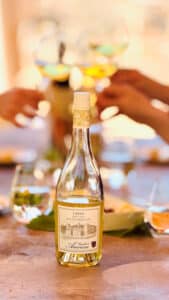 The Star of the Show: Estate-Grown Libero Moscato
The Star of the Show: Estate-Grown Libero Moscato
At the heart of Libero is our 2024 Libero Moscato, made from fruit grown on our very own estate vineyards in Anderson Valley. Using advanced spinning cone and vacuum technology, we gently remove alcohol while preserving the integrity, structure, and beauty of the wine.
Tasting Notes
- Aromas: Geranium petals, orange blossom, honeysuckle
- Flavors: Ripe pear, sun-kissed mandarin, crisp green apple
- Pairs With: Honey-drizzled goat cheese crostini, lemony calamari salad, Thai green curry
A Place at the Table for Everyone
 Whether you’re a wellness traveler, designated driver, expecting parent, or just sober-curious, with Libero, we’re making wine culture more inclusive, more intentional, and more joyful than ever. Tasting experiences start at $60 and now include the option to craft a completely non-alcoholic or blended tasting.
Whether you’re a wellness traveler, designated driver, expecting parent, or just sober-curious, with Libero, we’re making wine culture more inclusive, more intentional, and more joyful than ever. Tasting experiences start at $60 and now include the option to craft a completely non-alcoholic or blended tasting.
“This is about belonging,” says President Georg Salzner. “No guest should ever feel left out when they visit the Castello.”
Come Taste the Libero Line
Libero is available exclusively at Castello di Amorosa and online through our store.
- Shop Libero
- Plan Your Visit
- Follow us: Instagram | Facebook | YouTube
Learn How to Taste Wine

Learn How to Taste Wine
A Beginner’s Guide to Wine Tasting: Sip, Savor, and Discover
Wine tasting might seem like an intimidating experience reserved for sommeliers or wine enthusiasts, but the truth is, anyone can learn to appreciate and enjoy wine. Whether you’re visiting Castello di Amorosa’s Napa Valley tasting room or exploring bottles at home, this guide, designed for beginners, will help you taste wine like a pro. Let’s begin to learn how to properly taste wine with these steps:
Step 1: Choose Your Wine
Before you begin, decide on the type of wine you’d like to taste. As a beginner, we’ll teach you how to taste good wine properly. You should first consider starting with a variety of wines – a crisp Pinot Grigio, a robust Napa Valley Cabernet Sauvignon, or a light and fruity Morning Dew Ranch Vineyard Pinot Noir. This variety of wines will help you identify your preferences.
Step 2: Set the Scene

The environment plays a significant role in wine tasting. Here are a few tips:
- Lighting: Ensure the area is well-lit so you can observe the wine’s color.
- Glasses: Use clear wine glasses to better appreciate the wine’s appearance and aroma.
- Temperature: Serve white wines chilled. For wines like Pinot Grigio, you may want to serve at 45 to 49 degrees Fahrenheit and allow the wine to warm up in the glass. Chill these wines in the refrigerator for about 1.5 hours. For lighter reds, like our Anderson Valley Pinot Noir or Voyager Vineyard Sangiovese, serve them at 54-60 degrees to highlight the evocative aromas and flavors inherent in this popular varietal. Chill for 45-60 minutes in the refrigerator prior to serving. Bolder, big reds like Castello’s Il Barone or Merlot should be served cooler than you’d think, around 60 to 65 degrees. This will allow these bigger wines to fully express their bold aromas, express their lush mouthfeel and highlight the nuanced flavors. Chill in the refrigerator for about 25 minutes in the refrigerator prior to serving.
- Neutral Palate: Avoid strong-smelling candles or food to ensure your senses are focused on the wine.
Step 3: Observe the Wine
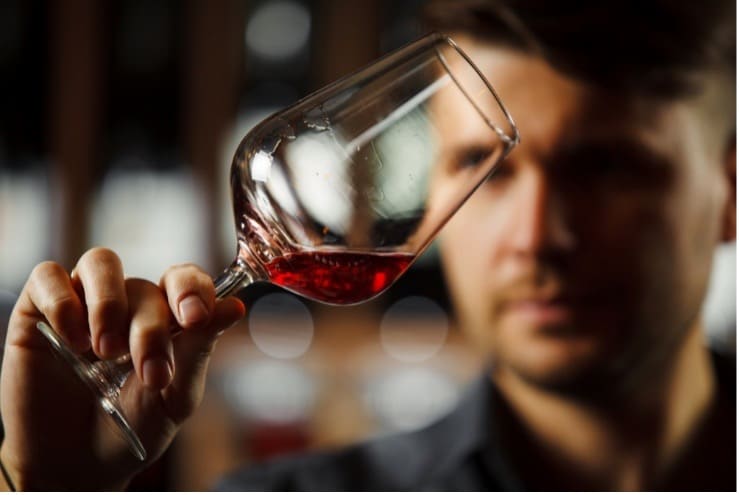
Pour a small amount of wine into your glass and take a moment to look at it:
- Color: Tilt the glass slightly and observe the wine against a white background. Is it pale or deep? Clear or cloudy?
- Legs: Swirl the wine gently. The streaks that form on the inside of the glass (known as legs) can indicate alcohol content; thicker legs often mean higher alcohol content.
Step 4: Smell the Wine

A significant portion of wine tasting involves your sense of smell. Swirl the wine to release its aromas, then:
- Take a Whiff: Place your nose over the glass and inhale deeply to experience all the aromas.
- Identify Aromas: Try to pick out specific scents. Do you smell fruits, spices, or earthy tones? Each wine has a unique bouquet that offers hints about its flavor profile. It might be helpful to close your eyes during this wine experience phase.
If you like wine with stunning aromas with beautiful flavors to match, you might want to include the Morning Dew Ranch Pinot Noir in your tasting experience. The estate vineyard is located in the Anderson Valley of California, a world-renowned area for growing Pinot Noir. Great aromas are born from vineyards in great growing regions. In the Morning Dew Ranch Pinot Noir, you might be wowed by the seemingly endless mingling of brambleberries, toasted sage and hints of clove. If you let the wine rest for a minute (breathe) the aromas will intensify and, perhaps, change slightly.
Step 5: Taste the Wine
Now for the fun part: tasting
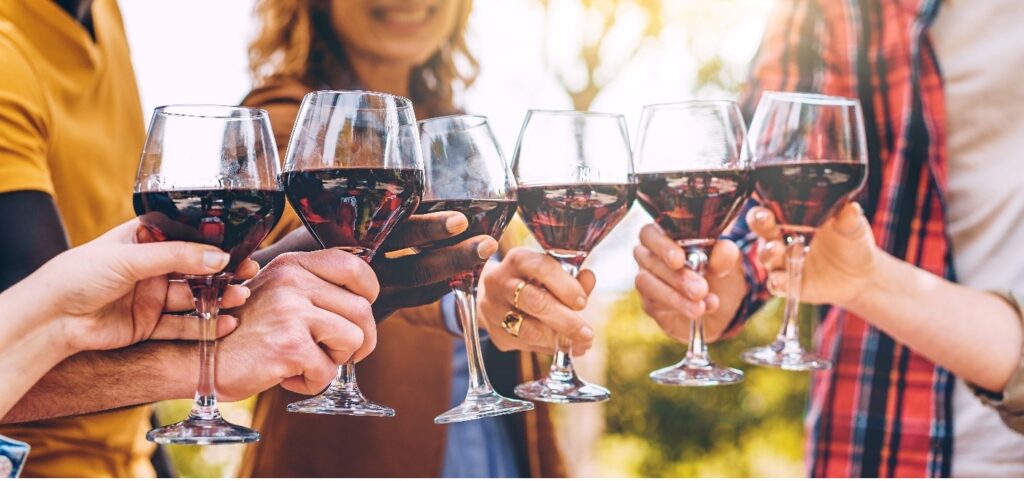
- Take a Sip: Take a small sip and let the wine coat your tongue.
- Hold: Hold the wine in your mouth for a few seconds to fully experience its texture and flavors.
- Identify Flavors: Note the initial taste, the mid-palate flavors, and the finish. Is it sweet, acidic, or tannic? Can you taste berries, citrus, oak, or chocolate?
- Swallow or Spit: If you’re at a wine tasting, feel free to spit into the provided containers to avoid overconsumption. Repeat this process a few times and experience the differences in taste.
If one of your tastings happens to be our 2018 Napa Valley Cabernet Sauvignon, you might get aromas of toasty black and red fruit, black cherry and, perhaps, a little leather. On the palate, you’ll experience a medium to full-bodied wine with a round, mouth-filling texture. The tannins are soft, and the flavors might include dark chocolate with hints of dried herb. We hope you enjoy this beautiful creation grown in Napa Valley vineyards and crafted by Brooks Painter and Peter Velleno, our winemakers!
Step 6: Record Your Impressions
Keep a notebook or use a wine-tasting app to jot down your thoughts. Include details like the wine’s name, vintage, region, and your personal tasting notes of color, body, smell and taste on the palate and after the finish. Over time, this record will help you refine your palate and discover your preferences.
Step 7: Pair with Food
Now for the Fun Part
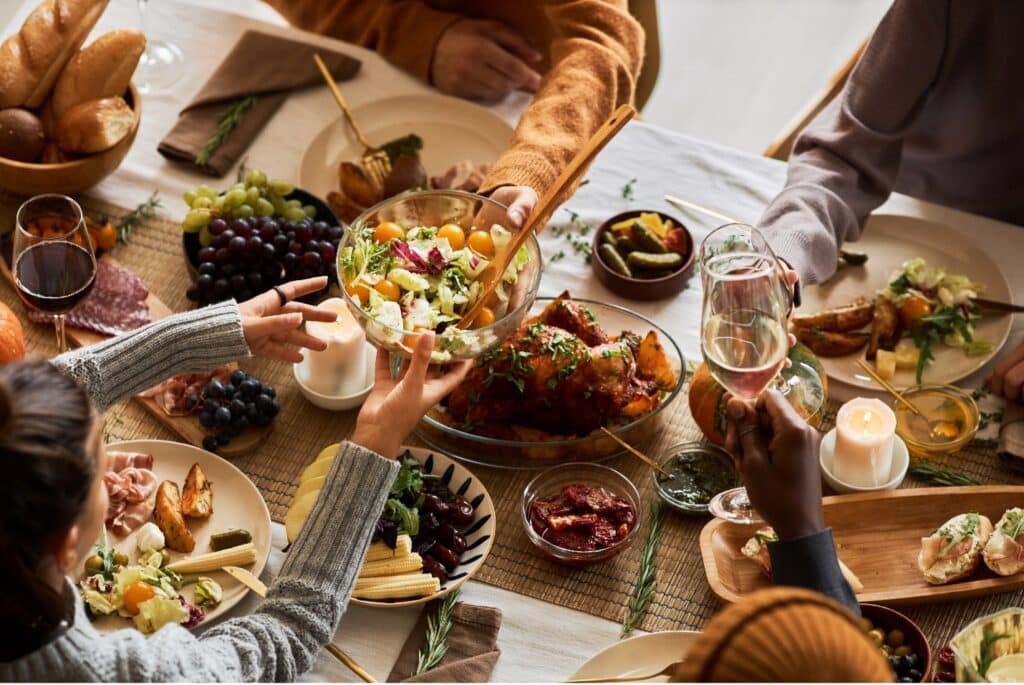
Experimenting with food pairings can elevate your wine experience. A few classic combinations include:
- White Wine: Pairs well with seafood, poultry, and creamy pasta dishes.
- Red Wine: Complements red meats, hearty stews, and aged cheeses.
- Sparkling Wine: Excellent with salty snacks, fried foods, and light desserts.
Final Tips for Beginners
- Stay Open-Minded: Don’t dismiss a wine after one sip. Some flavors develop as you taste. The bottom line is taking your time to allow the wine to open in the glass and for your palate to adjust. This could take several minutes and a few sips to properly taste the wine. We highly recommend, to enhance your wine tasting experience, to smell the aromas of the wine before taking a sip.
- Ask Questions: If you’re at a vineyard or wine shop, don’t hesitate to ask for recommendations or information about the wines.
- Practice: The more you taste, the more confident you’ll become in identifying and describing wines.
Wine tasting is an enjoyable journey that combines art, science, and personal preference. By following these steps on how to taste wine for beginners, you’ll build a foundation for appreciating wine and discovering your unique palate. So, open that bottle of your favorite Castello di Amorosa wine, grab a glass, take a sip, and let your wine adventure begin!
Wine tasting is an enjoyable journey that combines art, science, and personal preference. By following these steps, you’ll build a foundation for appreciating wine and discovering your unique palate. So, open that bottle of your favorite Castello di Amorosa wine, grab a glass, take a sip, and let your wine adventure begin!
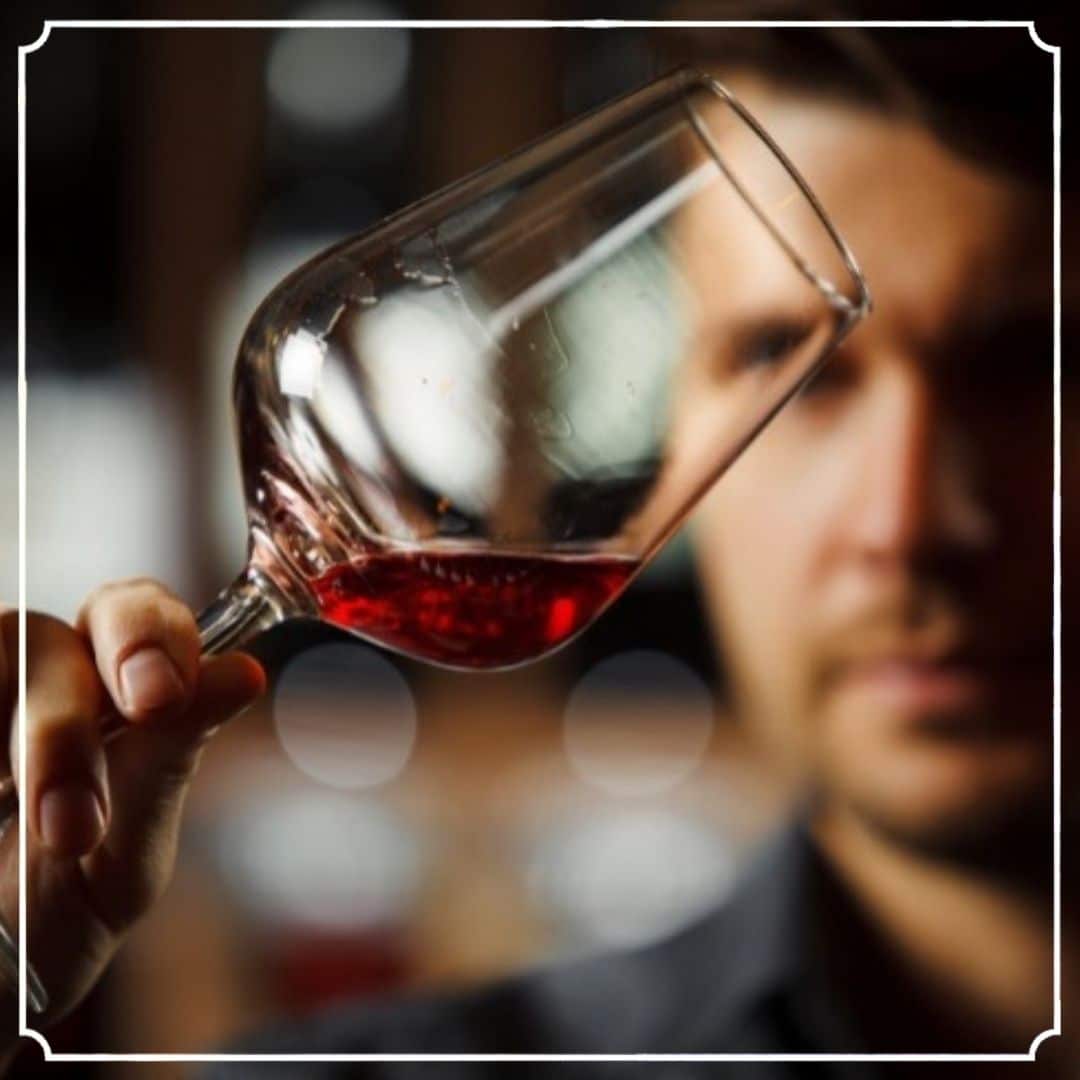
Jim Sullivan
Jim Sullivan, Vice President of Public Relations and Marketing spearheads Castello di Amorosa’s publicity and marketing initiatives.
With over 20 years of marketing, public relations and business development experience with professional motorsports teams and in a variety of healthcare organizations in Southern California, Jim first joined Castello di Amorosa in 2008 as Public Relations and Marketing Manager.
An avid cyclist, Jim fell in love with wine and wineries while exploring the Washington State countryside. His love of wine was reinforced during subsequent trips to the Napa Valley to visit family.
Jim holds an MBA from the University of Redlands and a Bachelor of Science from Central Washington University. He resides in Calistoga, Calif.
Overlooking the Napa Valley: The Melanson Vineyard

Overlooking the Napa Valley:
The Melanson Vineyard
Melanson Vineyard is one of a handful of exceptional vineyards that share an enchanted slope of land nestled among the rugged eastern ridges of the Napa Valley. It’s called Pritchard Hill. Most vineyards in the Napa Valley are based in one of the 16 American Viticultural Areas, or Sub-AVAs of the Napa Valley. Melanson Vineyard and 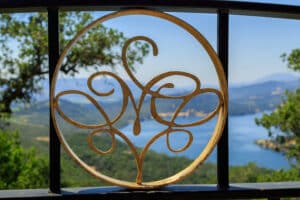 Pritchard Hill are not in a Sub-AVA but the Pritchard Hill growing region is arguably one of the top growing regions in all of Napa Valley. Sitting in peaceful isolation on a very steep, west-facing, boulder-strewn hillside, this 1,300 ft, 10.5-acre vineyard site enjoys late afternoon sun and remarkable views of Lake Hennessey below. Vineyard owner and wine grape grower Greg Melanson is serious about growing world-class Cabernet Sauvignon.
Pritchard Hill are not in a Sub-AVA but the Pritchard Hill growing region is arguably one of the top growing regions in all of Napa Valley. Sitting in peaceful isolation on a very steep, west-facing, boulder-strewn hillside, this 1,300 ft, 10.5-acre vineyard site enjoys late afternoon sun and remarkable views of Lake Hennessey below. Vineyard owner and wine grape grower Greg Melanson is serious about growing world-class Cabernet Sauvignon.
“As a master winemaker, Castello’s Brooks Painter understands you need great grapes to make a truly great wine,” said Greg Melanson. “The Cabernet Sauvignon flavors that are truly unique to Pritchard Hill are in every glass of Castello di Amorosa’s Melanson Vineyard Cabernet,” he added.
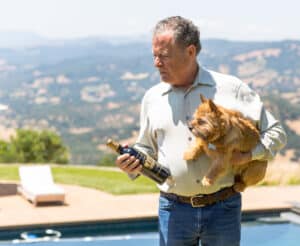
Several years ago, Castello di Amorosa began partnering with Greg Melanson and his meticulous vineyard manager, who carefully tends to the vineyard. The vineyard is planted in Sobrante loam soils, a clay loam mix, fractured volcanic material, and large volcanic rocks. Loam soils in general, and specifically Sobrante loam which allows the water to drain creating vine stress and mature flavor development in the grapes. The vineyard is known for its very small, intensely flavored grapes with thick skins. Melanson says the yields vary depending on what Mother Nature provides. Each vintage is different, and the yield is highly dependent on the weather.
 “I have a penchant for high-elevation vineyards,” said Brooks Painter, Director of Winemaking for Castello di Amorosa and V. Sattui Winery in St. Helena. “And upon first glance at this vineyard, I was immediately impressed with the intensity of the sunshine and the limiting growth potential of the vineyard soil.”
“I have a penchant for high-elevation vineyards,” said Brooks Painter, Director of Winemaking for Castello di Amorosa and V. Sattui Winery in St. Helena. “And upon first glance at this vineyard, I was immediately impressed with the intensity of the sunshine and the limiting growth potential of the vineyard soil.”
The Melanson Vineyard on Pritchard Hill sits well above the fog line which translates to plenty of sunshine to ripen the grapes. When tasting this Cabernet Sauvignon from this mountain terroir, you’ll immediately be struck by the soft, round mellowness of the wine. Its warm velvety nature with refined tannins on the palate continues to a long, complex finish that is full of fresh, dark fruit.
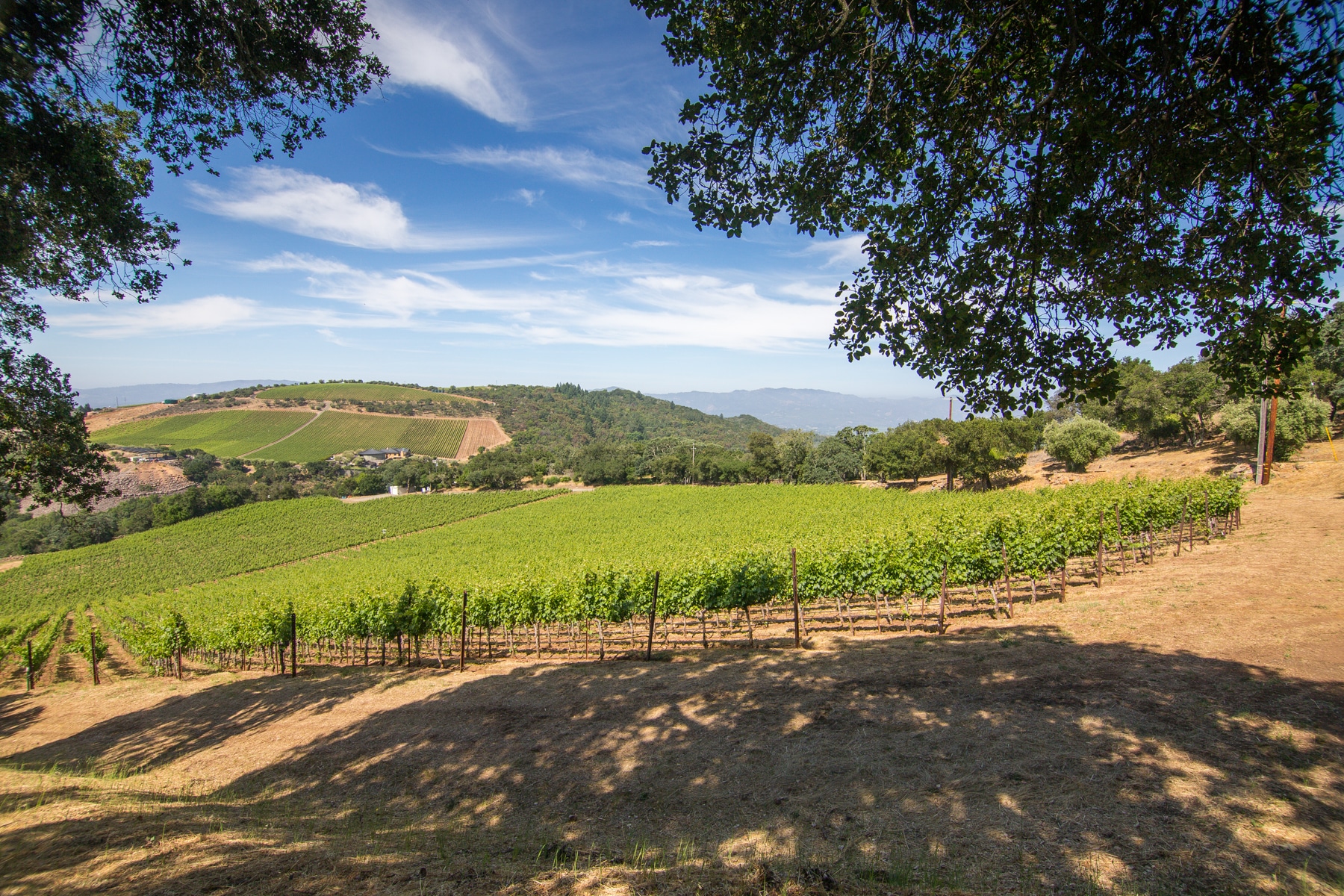

Jim Sullivan
Jim Sullivan, Vice President of Public Relations and Marketing spearheads Castello di Amorosa’s publicity and marketing initiatives.
With over 20 years of marketing, public relations and business development experience with professional motorsports teams and in a variety of healthcare organizations in Southern California, Jim first joined Castello di Amorosa in 2008 as Public Relations and Marketing Manager.
An avid cyclist, Jim fell in love with wine and wineries while exploring the Washington State countryside. His love of wine was reinforced during subsequent trips to the Napa Valley to visit family.
Jim holds an MBA from the University of Redlands and a Bachelor of Science from Central Washington University. He resides in Calistoga, Calif.
Wine Grape Juice Mocktail Recipes | Mocktails with Grape Juice

Castello di Amorosa Explores the Versatility of Wine Grape Juice in Mocktails
When we think of grape juice, our minds often drift to thoughts of rich reds or crisp whites enjoyed in a glass. However, beyond its role as a standalone beverage, wine grape juice holds immense potential in the realm of mocktails, offering a flavorful and sophisticated base for non-alcoholic creations.
The Essence of Wine Grape Juice
Wine grape juice captures the essence of the grape varietals from which it is derived, carrying the same distinct flavors, aromas, and complexities found in wines. Whether it’s the boldness of Cabernet Sauvignon, the fruity notes of Chardonnay, or the floral hints of Riesling, each grape variety contributes its unique characteristics to the juice.
Brooks Painter, Director of Winemaking has been making wine grape juice with no alcohol for many years. “I have a passion for making grape juices that use the same grapes used to make our wines,” said Painter. “The making of quality grape juice that truly expresses the fruit and flavor of the grape is a challenge, and now we’ve mastered how to make these juices true to their varietal aromas and flavors,” he adds.
Peter Velleno adds that “our grape juice is made in much the same way as our wine. We harvest a few days early to provide a base of acidity. The clusters are hand-harvested and delivered to the crush pad where they are destemmed, pressed and then the juice is chilled to about 32 degrees. The big difference is that we don’t add yeast to convert the grape sugars to alcohol. We skip that step, and the result is a great alternative to wine which has surprising ageability, of up to 4 years.”
Crafting Mocktails with Wine Grape Juice
Mocktails, or non-alcoholic cocktails, have gained popularity for their ability to provide a refreshing and enjoyable drinking experience without the presence of alcohol. The Castello’s wine grape juice serves as an excellent base for mocktails due to its depth of flavor and natural sweetness. Here are a few delicious recipes created by Castello di Amorosa staff that incorporate wine grape juice into delightful mocktails: Mocktail Recipes
The Art of Mocktail Mixology
Creating mocktails with wine grape juice is not just about mixing ingredients but also about balancing flavors and textures. Consider incorporating herbs, spices, and other fruit juices to enhance the complexity of your mocktails.

Additionally, the presentation plays a significant role in elevating the drinking experience, so don’t hesitate to garnish with fresh herbs, citrus twists, or edible flowers.
Wine grape juice opens up a world of possibilities for crafting delicious and sophisticated mocktails. Whether you’re hosting a gathering, enjoying a relaxing evening, or simply seeking a flavorful non-alcoholic option, experimenting with wine grape juice in mocktails is sure to delight your taste buds and elevate your beverage repertoire. Cheers to the art of mocktail mixology!
The Castello di Amorosa Grape Juice
Imagine picking a grape cluster from the vineyard, pressing the juice, and putting it in a bottle to drink; no fermentation so there is no alcohol. The result is the delicious flavors and aromas of the individual grape varietals:
Gewürztraminer White Grape Juice:
 With aromas of rose pedals and lychee nut, this stunning white wine grape juice is bursting with exotic flavors of passion fruit, pear ginger and honeysuckle. Just add some crushed mint leaves and fresh lime and you’ll think you’re drinking a Mojito! It’s a super delicious grape juice mocktail recipe…. With no alcohol.
With aromas of rose pedals and lychee nut, this stunning white wine grape juice is bursting with exotic flavors of passion fruit, pear ginger and honeysuckle. Just add some crushed mint leaves and fresh lime and you’ll think you’re drinking a Mojito! It’s a super delicious grape juice mocktail recipe…. With no alcohol.
Castello’s VGM or Virgin Gewurztraminer Mojito. A vibrant and refreshing white grape juice drink.
Sparkling Red Grape Juice:
This red wine grape juice is a wonderful expression of fruit-driven aromatics and luscious flavors of ripe watermelon and red berries. With a pleasing interplay of enticing acidity, balanced sweetness and a touch of effervescence, this grape juice can be combined with a touch of lemon juice and fresh herbs, like thyme to create an evocative red wine grape juice mocktail.
Known as the sparkler, this red grape juice mocktail has the added twist of thyme to pair with the sweetness of the grape juice. Perfectly balanced.
Muscat Canelli Grape Juice:
Sourced from vineyards in Santa Barbara County and Solano County, this Muscat grape juice is beautifully aromatic with characteristics of exotic spices and orange blossoms. Light and refreshing on the palate, it’s bursting with stone fruit flavors like pear and nectarine.
Try this honey-laced Muscat Mingle grape juice mocktail. It’s on another level.
See all the Castello grape juice based mocktails here.
Fall in the Vineyard

Fall in the Vineyard
Fall is here. It’s an especially significant time in the wine world—the time of grapes reaching maturity and being harvested and starting their cycle of becoming wine. Leaves are changing color, there’s a coolness in the air, we start to crave heartier foods. It’s also the time when our wine palate evolves into seeking out the best fall wines.
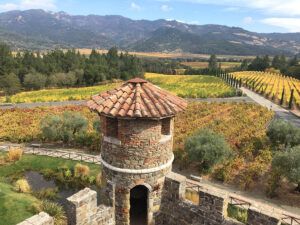
What’s a fall wine? It’s probably red: one great example is our Il Barone. This reserve wine is typically a blend of approximately 95% Cabernet Sauvignon and 5% Merlot. The majority of the grapes were sourced from the Rutherford AVA, known for the complexity in its terroir. Our winemakers aged this vintage for 22 months in French oak barrels. The name is a nod to our Italian heritage and the nobility, if you will, of the wines we craft. In this case, Il Barone suggests refinement and elegance as well as power and nuanced strength, all great attributes for a big, bold and delicious Cabernet Sauvignon.
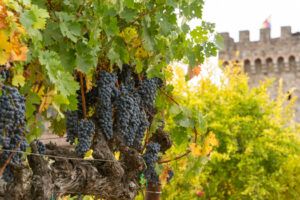
Fall in the Napa Valley is one of the most magical times of the year. Here at the Castello we welcome visitors who come intentionally to enjoy the aromas of fermenting grapes and glimpses of grapes being processed on the crush pad of the castle with state-of-the-art equipment and French Oak wine barrels sourced from the center of France.
The autumn is a time when all of us look forward to sitting down to lots of food and deeply flavored foods, like roasts and rich cheeses and long-simmered stews. We offer a number of ‘fall wines’ to pair with those choices.

Because of the crispness in the air during the fall in the Napa Valley, visitors often enjoy longer visits at the Castle, making sure they’ve climbed all the stairs, surveyed the countryside beyond our moat, maybe even peeked into the torture chamber or the chapel.
All of that exertion does open up your taste buds to a range of great fall wines which are primarily our small production single vineyard Cabernet Sauvignons, such as Morisoli-Borges Cabernet Sauvignon as well as traditional Italian varietals such as Sangiovese, Pinot Bianco, Vermentino and Pinot Grigio.
Fabulous fall! Come visit us during this great time of year or re-create our romantic setting at your home—light some candles, settle in by the fireplace or around an outdoor fire, open some wonderful autumn wines along with hearty food and enjoy!
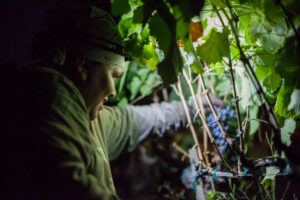
Explore Morisoli-Borges

Explore Morisoli-Borges Vineyard in Napa Valley’s Rutherford Bench
Nestled at the heart of Napa Valley’s renowned “Rutherford Bench,” the Morisoli Family vineyard stands as a living testament to four generations of unwavering dedication to crafting exceptional Cabernet Sauvignon. Originating in the early 1900s, the Morisoli legacy took root in the western expanse of Rutherford, where their grape cultivation journey began. Today, under the sustainable stewardship of the fourth generation, this vineyard seamlessly blends “old” and “young” Cabernet Sauvignon blocks, each nurtured with meticulous care. The resulting wine eloquently captures the celebrated “dust” character intrinsic to Rutherford, enfolding the palate with its tender, velvety tannins.
Since 1900
The Morisoli Family’s grape-growing journey, dating back to 1900, continues into the present with Mike Morisoli. In 1971, Mike Morisoli’s parents purchased this very vineyard, located on the west side of Highway 29, and just south of Niebaum Lane, continuing the family’s tradition of winemaking excellence. The vineyard transitioned primarily to Cabernet Sauvignon in the late 1980s, with a subsequent smaller redevelopment in 2006.
The Legendary Rutherford Dust
Positioned deep within the Napa Valley, the Rutherford Bench emerges as a distinctive American Viticultural Area. Its heart lies in the small town of Rutherford, California, renowned for its picturesque views and quiet small town charm. Its well-drained soil, a blend of gravel, loam, and sand enriched by volcanic deposits and marine sediments, is a canvas for viticultural artistry. In a modest expanse spanning 6,650 acres, this appellation weaves its magic.
The Rutherford region offers a complexity mirroring Napa Valley’s own intricate tapestry. A sanctuary for late-ripening grapes, nestled in the valley’s core. This deliberate pace imparts finesse and intricate layers to the wines. Amplified by deeper soils and diverse microclimates, it stretches growing seasons and nurturing “hang time,” resulting in tannins with a velvety, ethereal character. The wines from these soils embody a delicate dance of “fine dusty tannins,” accompanied by hints of plush cocoa powder. The Rutherford AVA encapsulates more than geography; an unfolding experience in every sip.
Mike Morisoli and The Next Generation of The Morisoli Family
“Rutherford dust” is a term for the fine, dusty tannins found in wines from Rutherford AVA, Napa Valley. These tannins enhance texture, mouthfeel, and aging potential, attributed to the region’s soil, climate, and grape conditions giving them a recognizable quality. The concept gained prominence as winemakers and wine enthusiasts began to notice a consistent thread of these fine tannins in wines produced in the region.
The Rutherford Dust Society, founded in 1994, promotes Rutherford’s unique wines. It highlights the “Rutherford dust” concept and fosters a community of local winemakers, organizing events, tastings, and educational programs. This society preserves winemaking heritage and contributes to the reputation as a premier wine-producing area within Napa Valley. The primary goal of the society is to raise awareness about the distinct attributes of Rutherford wines, particularly Cabernet Sauvignon, and to foster a sense of community among the wine producers in the area.
Mike Morisoli with Winemaker Brooks Painter & Castello President Georg Salzner
Limited Production
At Castello di Amorosa we strive to create the highest quality Cabernet possible, we are only able to do this with the finest Grapes available. Mike Morisoli’s Rutherford vineyard fits that profile, with a long history of producing great Cabernet grapes. This single-vineyard site is a beautiful expression of Napa Valley Cabernet Sauvignon. As a proud representation of Rutherford’s unique terroir, this limited-edition 2017 Morisoli-Borges Cabernet, with its luscious notes of blueberries, blackberry jam, cassis, and graphite, stands as a true expression of Napa Valley’s winemaking prowess and is destined to age gracefully for more than two decades. The wine expresses the Rutherford appellation’s famous “dust” character, with its unique soft, silky tannins. Expected to easily age 20+ years.
Past Awards & Accolades
Explore our past awards and accolades for our Morisoli-Borges Cabernet Sauvignon.
♦ 95+ Points – Jeb Dunnuck
“The 2018 Cabernet Sauvignon Morisoli-Borges from the Rutherford region of the valley is a beautiful 2018 that does everything right. Lots of spiced currants, mulled plums, cedarwood, loamy earth, and dried tobacco give way to a medium to full-bodied, concentrated, spicy, complex wine that needs 3-4 years of bottle age.”
♦ 95 Points – Antonio Galloni
“The 2018 Cabernet Sauvignon Morisoli-Borges Vineyard offers a striking expression of Rutherford. Beautifully layered and ample, the Morisoli-Borges is a stunner right out of the gate. Inky dark fruit, chocolate, licorice, cloves, espresso and lavender all build in a resonant, super-expressive Cabernet that delivers the goods, and then some.”
♦ 93 Points – James Suckling
“Black and blue berries, mushrooms, earthy notes and chocolate as well. It is full-bodied with firm tannins and an ample, flavorful and long finish. I liked the slightly herbal undertone at the end. Try after 2023.”
♦ 97 Points – Jeb Dunnuck
“Sourced all from the famed “Rutherford-Bench” section of the valley and all Cabernet, the 2017 Cabernet Sauvignon Morisoli-Borges Vineyard sports a saturated purple hue as well as loads of spice, crushed violets, leafy herbs, chocolate, and cedar all supported by beautiful blueberry and wild strawberry fruits. Plush and sexy on the palate, with full-bodied richness and more opulence and decadence than most in the vintage, it hits all the right spots and is a beautifully balanced, sexy 2017 to enjoy over the coming 20-25 years or more.”
♦ 93 Points – James Suckling
“Attractive aromas of fresh fruit with a ripe array of redcurrants and raspberries, as well as blackcurrant and violet notes. The palate has a sleek, juicy and fleshy feel with plenty of ripe, rich fruit and a smooth-honed, long and plush texture. Drink or hold.”
♦ 96 Points – Jeb Dunnuck
“The 2016 Cabernet Sauvignon Morisoli-Borges Vineyard is cut from the same cloth with its flowery blue and black fruits, complex tobacco, cedary spice, and herbal notes, medium to full body, and sweet, yet certainly present tannins. It shines for its sheer purity of fruit and balance and is another pure class release from this team. It will keep for 3 decades. Drink 2019 – 2049.”
♦ 94+ Points – Lisa Perrotti-Brown, The Wine Advocate
“Made of 100% Cabernet Sauvignon, the deep purple-black colored 2016 Cabernet Sauvignon Morisoli-Borges gives up scents of warm blackberries, crushed red and black cherries and black currants with hints of cigar box, tilled soil and mossy bark. Full-bodied with a solid, muscular mid-palate of pure black and red fruits, it has a firm line of grainy tannins and an invigorating lift on the long finish. Drink 2019 – 2035.”
♦ 93 Points – James Suckling
“A rich and layered red with currant and blackberry character. Full body, round and caressing tannins and a flavorful finish. Pure Cabernet Sauvignon. Drink or hold.”
♦ 93 Points – Lisa Perrotti-Brown, The Wine Advocate
“The deep garnet-purple colored 2015 Cabernet Sauvignon Morisoli Borges is 100% Cabernet Sauvignon and offers spicy aromas of cedar chest, blackberries and blueberry compote with notes of licorice and fragrant earth. Full-bodied and concentrated in the rich, spicy mouth, it has firm, chewy tannins and finishes long and a bit oaky.”
♦ 92 Points – James Suckling
“Intense aromas of blackberries, tar, blueberries and mint, following through to a full body. Round and silky tannins and a flavorful finish. Fruit-forward but still fresh. Drink or hold.”
♦ 98 Points – Jeb Dunnuck
“The 2014 Cabernet Sauvignon Morisoli-Borges Vineyard comes from a site located in Rutherford, on the valley floor. It too is inky colored and offers a sensational bouquet of crème de cassis, blueberries, graphite/lead pencil shavings, tons of crushed rocks and hints of violets. Layered, gorgeously pure, concentrated and always elegant and silky, with no sense of heaviness, enjoy this blockbuster anytime over the coming 3-4 decades. (Expected Maturity: 2018–2058)”
♦ 96 Points – Robert Parker, The Wine Advocate
“Coming from the valley floor, the 2014 Cabernet Sauvignon Morisoli-Borges Vineyard hails from the tenderloin of the so-called bench area. It shows gorgeous fruit, loads of blueberry, blackberry and cassis notes, licorice and incense followed by an opulent, voluptuously textured, super-sexy style with oodles of glycerin, fruit and extract. This is a stunner and irresistible already. Moreover, it should age nicely for another 15 or more years.
♦ 91 Points – Antonio Galloni, Vinous Media
“The 2014 Cabernet Sauvignon Morisoli-Borges Vineyard is one of the more powerful wines in the range. It also comes across as a bit compact at this stage and in need of further cellaring, although it is likely to always remain a bit on the linear side of things.”
♦ 94 Points – Robert Parker, The Wine Advocate
“The 2013 Cabernet Sauvignon Morisoli-Borges Vineyard, which comes from the Rutherford sector of Napa, shows beautiful blueberry and blackberry fruit, camphor and incense, a full-bodied, nicely textured mouthfeel, sweet velvety tannins and a long finish. This is a beauty, and a wine that can be drunk now or cellared for another 20 years.”
♦ 92 Points – Virginie Boone, Wine Enthusiast Magazine
“Compost aromas open this vineyard-designated wine, a full-bodied, densely concentrated exploration of juicy black licorice, coconut, and dust. Soft and lengthy, it develops slowly in the glass, providing a vibrant showcase for the site.”
♦ 91 Points – James Suckling
“Lots of ripe and unctuous fruit showing a light raisin and spice character. Full body, soft tannins and a juicy finish. This is ripe and smooth. Drink or hold.”
♦ 93 Points – Antonio Galloni, Vinous Media
“A big, explosive wine, the 2012 Cabernet Sauvignon Morisoli Borges hits the palate with a rush of dark red and blue fruits, smoke, incense, violets, lavender, orange peel and spices. The firm tannins are going to need time to settle down, so readers should not be in a rush. This is without question the most complex and pedigreed of Castello di Amorosa’s Cabernet Sauvignons. Anticipated maturity: 2017-2027.”
♦ 93-95 Points – Antonio Galloni, Vinous Media (Barrel Sample)
“The 2012 Cabernet Sauvignon Morisoli-Borges Vineyard is flat-out stunning. Rich, opulent and full-bodied, yet backed up by an imposing sense of structure, the 2012 possesses gorgeous depth and pure power. Mocha, plums, licorice, tobacco, graphite and ash all jump from the glass in an opulent, broad-shouldered wine loaded with class and pedigree. This hugely promising Cabernet Sauvignon is one of the best wines I have tasted from Castello di Amorosa.”
♦ 90-92 Points – Robert Parker, The Wine Advocate (Barrel Sample)
“A barrel sample of the dense ruby/purple-tinged, full-bodied 2012 Cabernet Sauvignon Morisoli Borges revealed lots of character as well as copious notes of blueberries, blackcurrants, black cherries, licorice, underbrush and spice. It should turn out to be an outstanding effort to enjoy during its first 10-15 years of life.”
♦ 92 Points – James Suckling
“A soft and silky red with plum, currants, and spice. Fully body and firm tannins that buttress the fruit. Delicious and fruity. Drink now.”
♦ 91 Points – Virginie Boone, Wine Enthusiast Magazine
“From decades’ old vines in the heart of the appellation, this wine conveys dusty milk chocolate and baked plum. It’s 100% varietal, aged almost two years in 60-gallon French oak barrels. Softly layered, and full bodied, it’s approachable now, linear in its acidity.”
♦ 91 Points – Wine & Spirits Magazine
“From a vineyard on the western benchlands of Rutherford, this is a voluminous Napa Valley cabernet with bright fruit ripeness that feels refreshing. What richness it delivers is clean and toned, focused by hints of lemon verbena and cherry skin. This should age with grace.”
♦ 90 Points – Robert Parker, The Wine Advocate
“The estate’s 2009 Cabernet Sauvignon Morisoli-Borges is a soft, supple wine that will drink beautifully over the next few years. Sweet black cherries, plums, herbs and licorice are some of the notes that take shape in this soft, caressing Cabernet Sauvignon. Anticipated maturity: 2012-2016.”
♦ 90 Points – Antonio Galloni
“The estate’s 2009 Cabernet Sauvignon Morisoli-Borges is a soft, supple wine that will drink beautifully over the next few years. Sweet black cherries, plums, herbs and licorice are some of the notes that take shape in this soft, caressing Cabernet Sauvignon. Anticipated maturity: 2012-2016.”
The Story of Quattro

The Story of Quattro: Fortune & Fate From Four Vineyards
Quattro represents the harmonious result of a winemaker’s instinct, quick thinking, and a touch of serendipity. It all began on October 15 during the 2012 harvest, there remained a small quantity of grapes from 4 outstanding Napa Valley Cabernet vineyards, and it looked as though the fermentation vessels were already full. With limited tank space remaining, Winemaker Peter Velleno found himself in a jam. Recognizing the exceptional quality of the fruit, he made a bold decision – to ferment these precious remnants together in a single small tank.
When the time was right, just as the fermentation was nearing its completion, the winemakers gathered to taste the wine. In that moment, it became evident that an ideal blend had taken place. This prompted them to christen it “Quattro,” in honor of its origins from the 4 distinct vineyard sites across the Napa Valley.
Ever since that fateful day, no further blending has been done with this wine, preserving its unique and authentic character that arose from the different vineyards. Quattro remains a testament to the artistry of winemaking and the importance of nature’s elements. Discover the bold character and rich complexity of the 2019 Quattro Napa Valley Cabernet Sauvignon, now available in our online shop.
The vineyards last utilized for this unique Cabernet are Gerlach Hammond, Perata, Rocca, and Villa Amorosa; vineyards typically used in the final blends of our Barone Cabernet Sauvignon and La Castellana Super Tuscan Blend. Quattro’s powerful, structured tannins are backed by hints of blackberry, cassis and leather. This bold Cabernet Sauvignon pairs perfectly with filet mignon.
Past Awards & Accolades
Explore our past awards and accolades for our Quattro, Cabernet Sauvignon.
♦ 94 Points – American Fine Wine Competition 2021- Gold Medal
“More than 550 wines from 125 wineries vied for top honors at this invitation only event. The Judging was conducted by a 28-member blue ribbon panel from across the wine industry, included educators, restaurateurs, retailers, journalists, and top sommeliers from across the country.”
♦ 93 Points – Owen Bargreen
“The outstanding, deeply-colored 2018 Castello di Amorosa ‘Quattro’ Cabernet Sauvignon spent 20 months in 65% new French oak before bottling. Ripe dark currants and huckleberries mark the nose, alongside wet gravel and graphite notes. The palate is soft and very seamless, creating a weightless effect. Drink 2022-2034.”
Oakville Collection

On Hallowed Ground
Finesse and attention to detail align to make the Oakville AVA truly special. History and mystique form the backbone of this famed growing region. A unique combination of soil, topography and climate join together here, creating an environment that makes Oakville a viticultural treasure. Napa Valley Oakville wineries are pure and transparent, sculpting the essence and adding subtle nuances to express each unique site.
A History of Excellence
In the heart of Napa Valley, California lies the town of Oakville. Once a steam train stop in the late 1800s, Oakville owes its name to the dense groves of native oak which once covered the area. Today, the Oakville name is synonymous with excellence in winemaking. H. W. Crabb planted the first vineyard here in 1868, 240 acres of land close to the Napa River that he named To Kalon. By 1877, Crabb was producing 50,000 gallons of wine per year.
In 1903, the United States Department of Agriculture established an experimental vineyard station in Oakville. Known as “Oakville Station”, the vineyard has been operated by the University of California at Davis for more than 50 years. The department has conducted critical viticulture research here, including trials of clones, rootstocks, vine spacing, pruning levels, irrigation and more.
The Oakville AVA is 5,700 acres in total and one of the largest vineyard areas in Napa Valley with 5,000 of those acres planted. Oakville’s soils are primarily gravelly and sandy, but a small portion is a mix of clay and sandy loam. It wasn’t until 1993 that the Oakville AVA was officially declared a sub-appellation of Napa Valley.
Oakville AVA: Cult Status
Oakville AVA’s status as a world-class grape-growing region is solidified in part because of the number of great Napa Valley wineries that call the region home. Known for its pricey cult wines, the excellent publicity of Oakville’s wines can partly be attributed to the unique quality of its soils and climate. This collection of family-owned vineyards is often tended to by meticulous growers.
Producers here focus on cultivating limited parcels of Cabernet Sauvignon and Merlot and smaller parcels of Petit Verdot, Cabernet Franc, Zinfandel, Sauvignon Blanc, and Chardonnay. Bordeaux-style blends are especially popular here and some critics even compare these wines to some of the finest Old-World Bordeaux labels. Critics claim these Oakville wines strike a perfect balance between lively acidity and sweet fruit. Unlike many other bold red wines produced in the Napa Valley, which tend to taste quite jammy and fruit-forward, Oakville wines are thought to be more complex and earthy. These age-worthy Cabernet routinely exhibit aromas that range from boysenberry, ripe blackberry, and blueberries, with hints of spice, tobacco leaf, and leather. When it comes to growing Cabernet Sauvignon, the region is just right. This helps the Oakville to perfectly express the essential qualities of Cabernet Sauvignon in deep, complex wines that last for decades.
Old World Heart & New World Style
During the growing season, temperatures in the low-to-mid 90s are common. Nights cool down dramatically, preserving acidity in the grapes. Cool marine fog can linger until late morning, chilling the fruit and protecting it from the morning sun.
Annual rainfall is about the same as Bordeaux, around 35 inches per year. In contrast to Bordeaux, Oakville gets most of the rain in winter. The climate and soils of Oakville allow Cabernet Sauvignon to reach perfect ripeness every year. Known for its bedrock soil, the result of sedimentary deposits from the hills that form Napa Valley. The soil is gravelly, with exceptionally good drainage. Wind and fog arriving from San Pablo Bay affect the morning and evening hours, but their effects are limited by the intervening Yountville Mountains. The western edge features the famous gravelly alluvial fans that include Martha’s Vineyard and to Kalon.
Oakville’s soils can vary considerably. In the east hills the soils are made up of rust red, volcanic rock and iron, mixed into the gravel and loam. A smaller portion of the AVA is a mix of clay and well-drained sandy loam.
Oakville AVA Comes To The Castle
We are pleased to announce the two newest additions to the Castle family. Our 2018 Oakville, Cabernet Sauvignon & our 2018 Oakville, Red Blend both produced in the world-famous growing region.
2018 OAKVILLE
Cabernet Sauvignon
Napa Valley
This limited production Cabernet Sauvignon comes from the fabled growing region of Oakville. Located in central Napa Valley, Oakville has been noted for its ability to produce award winning cult wines. The wine exhibits hints of opulent dark cherries, blackberry, spice box and espresso bean. Backed by silky tannins and a great mouthfeel. Give the wine time to develop and you will be rewarded with additional layers of complexity.
2018 OAKVILLE
Red Blend
Napa Valley
This Bordeaux style blend is open and approachable with soft textures. Layers of dark red fruits, licorice, black currant, anise and vanilla are present in the blend. This limited production wine hails from the Oakville AVA, one of the most respected growing regions in the world.
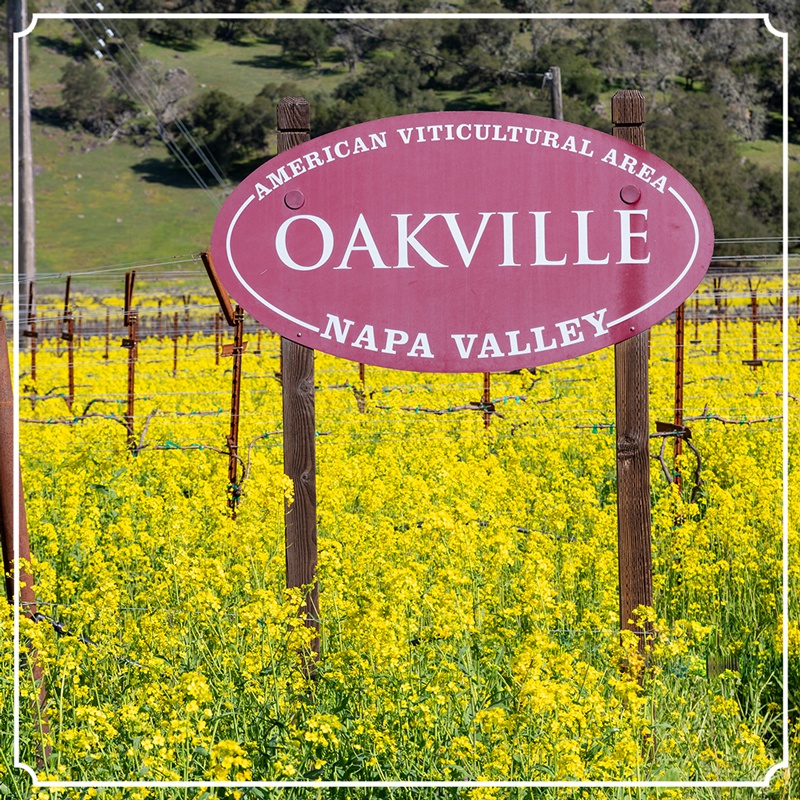
Snow Day


Snow Day!
A rare snowstorm hit Napa County early Friday morning! The occurrence marks only the second time it snowed at the Castle since opening in 2007. The snow made for a marvelous winter scene in the early morning hours.
Besides our animals staying in their pens for a bit longer in the morning, not much was effected at The Castle. At this time of year, snow poses no risk to our grapevines. Vines are dormant in their annual hibernation between fall’s harvest and the bud break in spring. During this time, the snow is just another form of water to the grapevine.
Napa Valley’s average elevation is just a few hundred feet above sea level, making the snow that much more of a rarity. Some wineries located in the higher elevations got up to a foot of snow. A drive through Wine Country looked more like a trip through Tahoe than wine country.
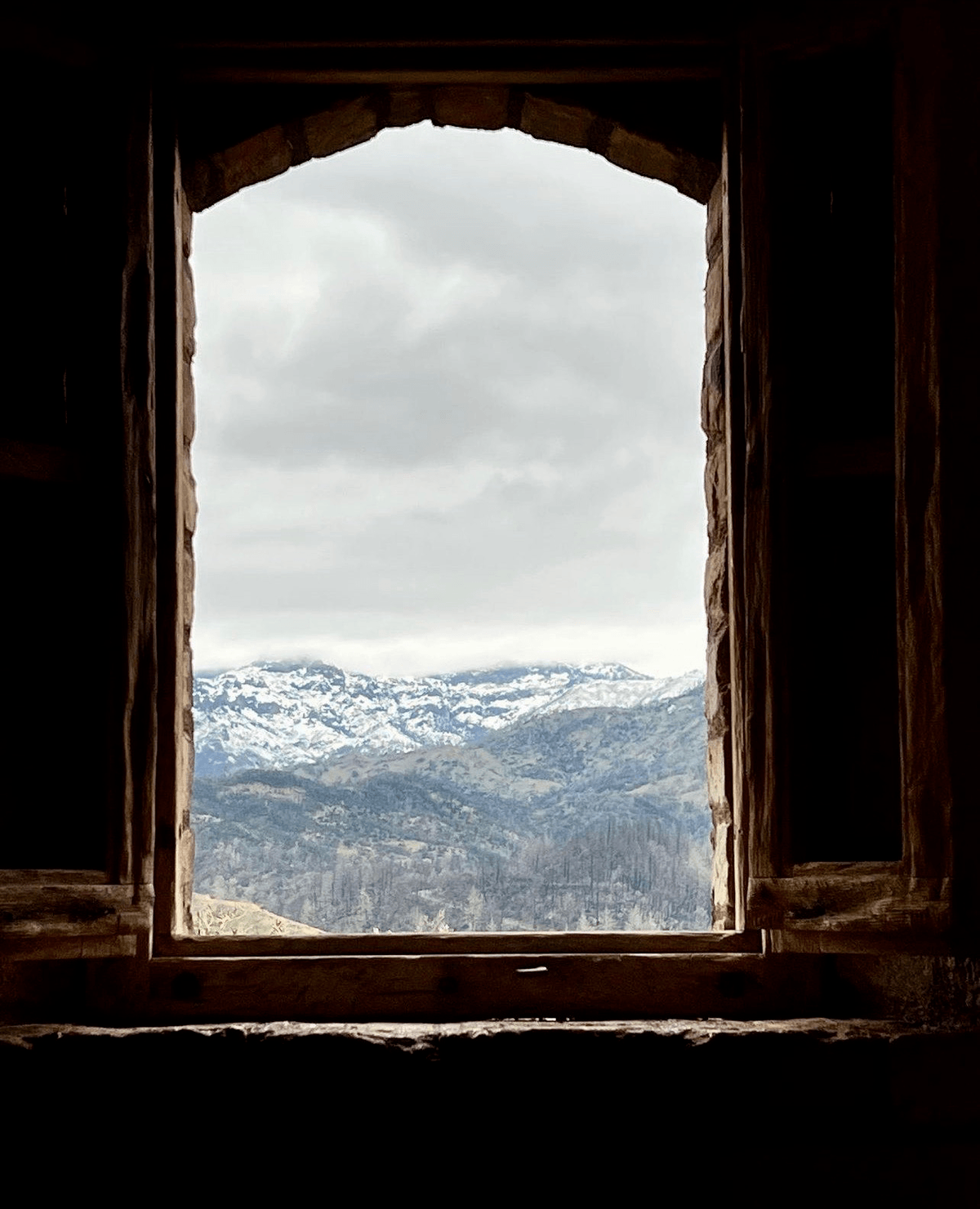
Freezing Temperatures
While there were record low temperatures posted across California. The storm caused both power outages, fallen trees, downed power lines and road closures across Napa Valley. A low temperature of 27 degrees was reached on Thursday the 23rd, turning the Napa Valley into a winter wonderland.
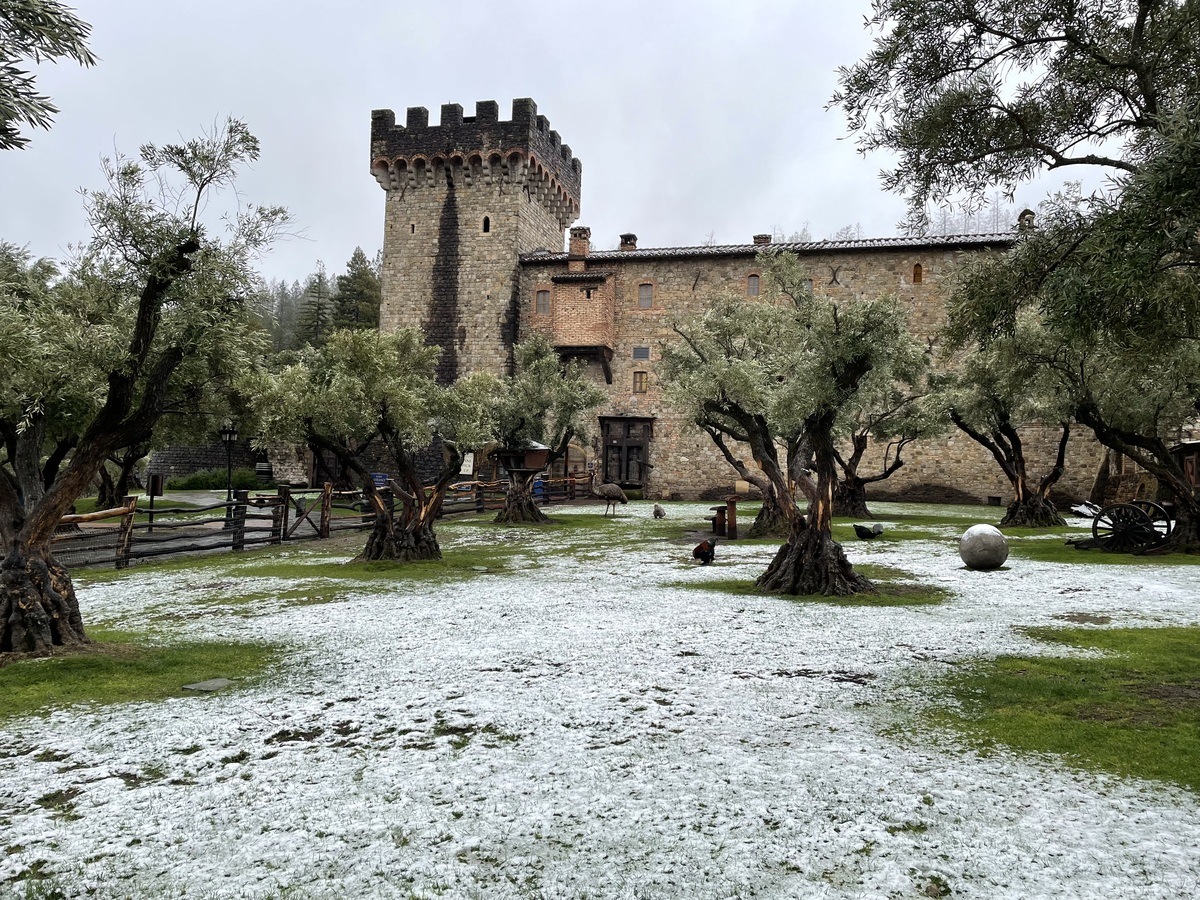
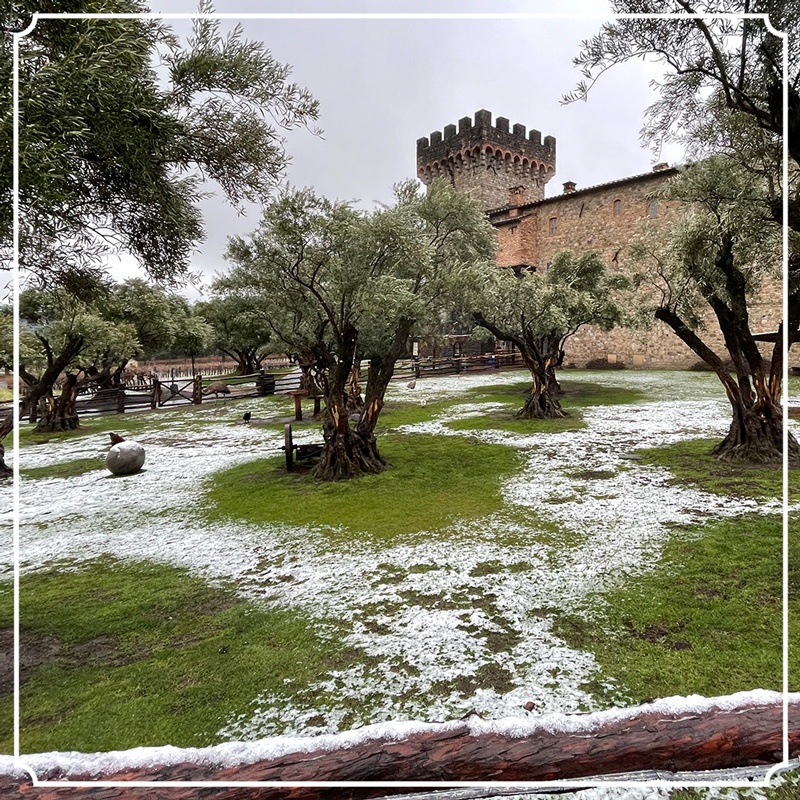
Cleaning The Ocean

Dario Sattui
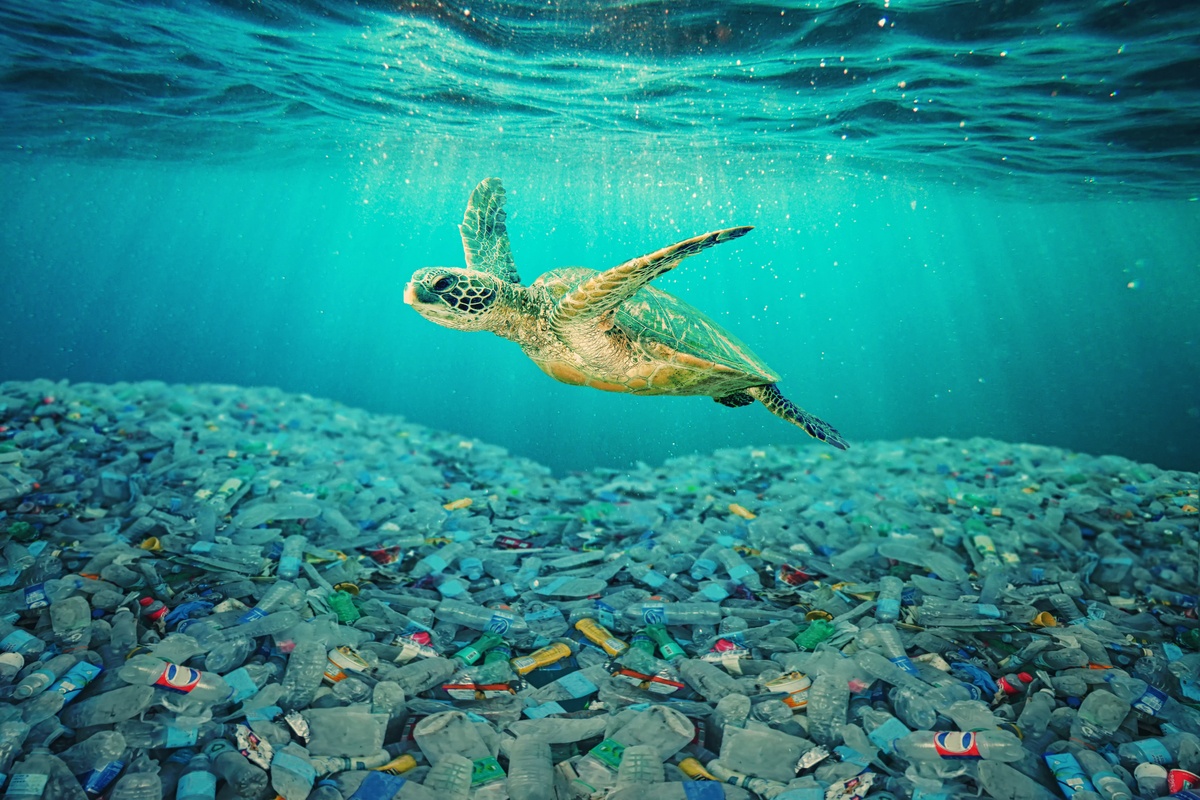
Cleaning The Oceans from Plastic
How many people realize that there is an island of trash – mostly discarded plastic – in the Pacific Ocean that is 3 times the size of France, a large European country? 8,000,000 metric tons of discarded plastic escapes into the ocean EVERY YEAR! That is the equivalent of placing five garbage bags full of trash on every foot of coastline around the world. This plastic is killing sea life and birds at an alarming rate.
How many of you realize that plastic production rose from 2.3 million tons in 1950 to 448,000,000 million tons by 2015? Production is expected to double to 896,000,000 tons by 2050.
Plastic contains additives which makes it unable to break down for 400 years or more. Half of all plastics ever manufactured have been made in the last 15 years. Landfills are overflowing with waste plastic. China has now refused to take our unwanted plastic into its country as it used to several years ago.
THIS IS AN ALARMING PROBLEM.
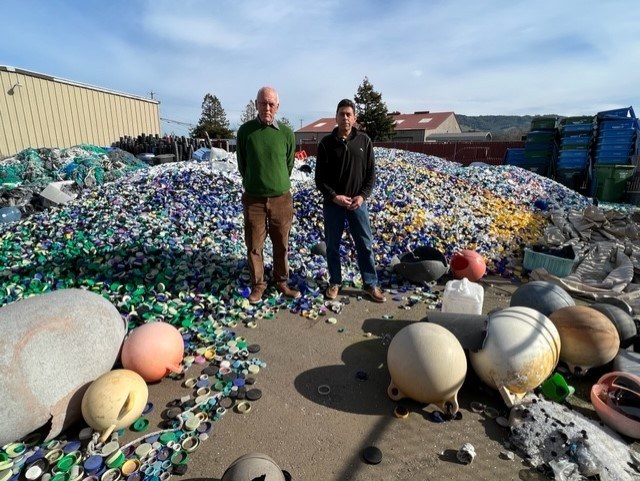
As I deeply care about our environment, I have invested in a company, Resynergi of Santa Rosa, California, which will take most discarded plastic and turn it into energy and/or chemicals for making new virgin plastics without harming the environment in the process. This process is called CMAP, Continuous Microwave Assisted Pyrolysis.
Discarded plastic is collected and heat of 1000 degrees Fahrenheit is applied in an oxygen-free environment causing the solid material to form a gas. The gas is then cooled into a liquid product (fuel) or it can be made into new plastic.
I am hopeful that we will all come together to solve this global issue.Otherwise, we will have a very contaminated environment which may not be worth living in.

There are several organizations across the world that fight to make the ocean a cleaner place. New technologies have seen tremendous advances in cleaning ability. Places like The Ocean Cleanup, The Blue Marine Foundation, Ocean Conservancy and Oceana all strive to make impacts, these are just a few companies but there is a long list of others. We recommend doing your own research before giving money or time. We just wanted to highlight some of the different places making a true impact.
